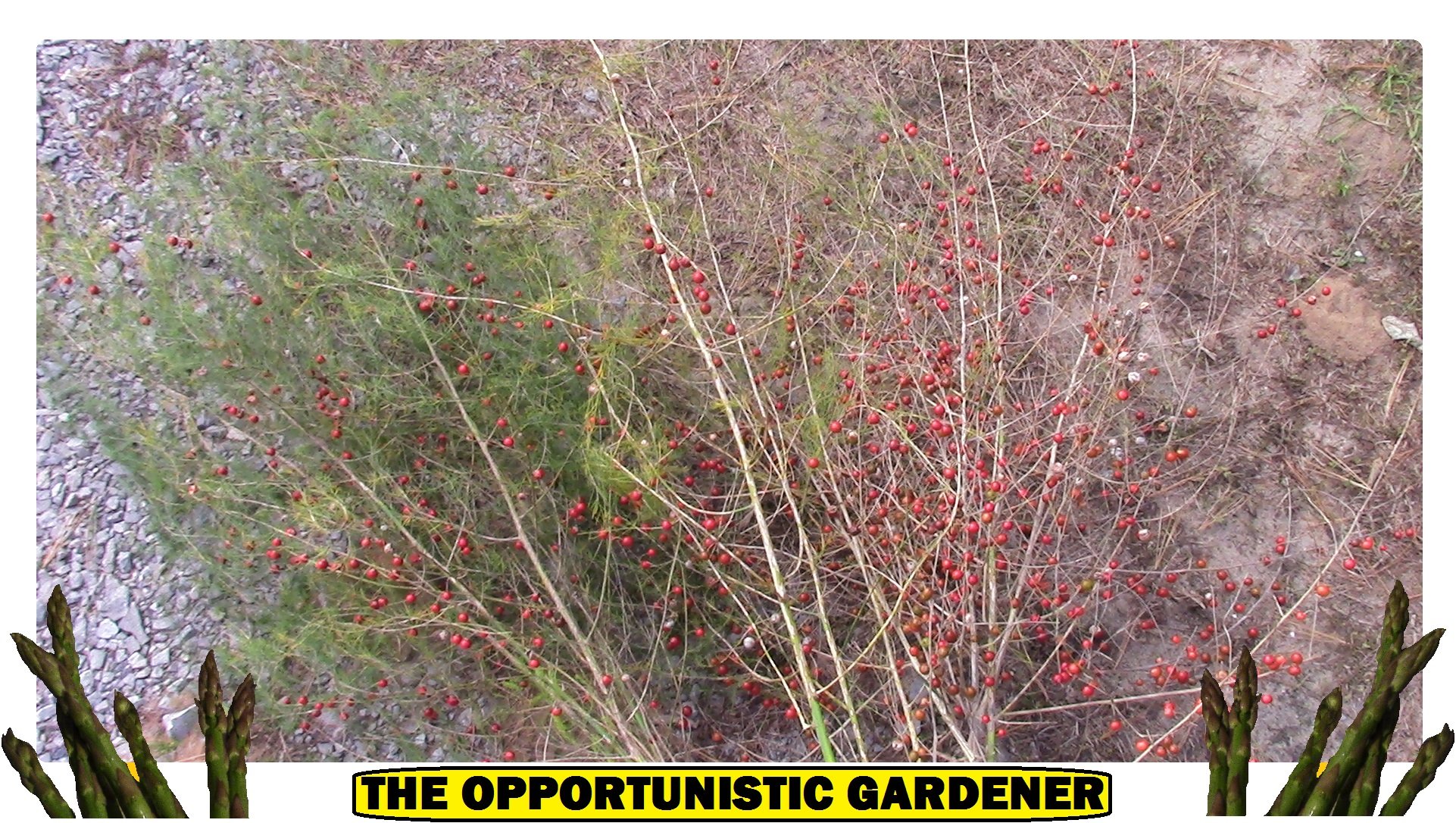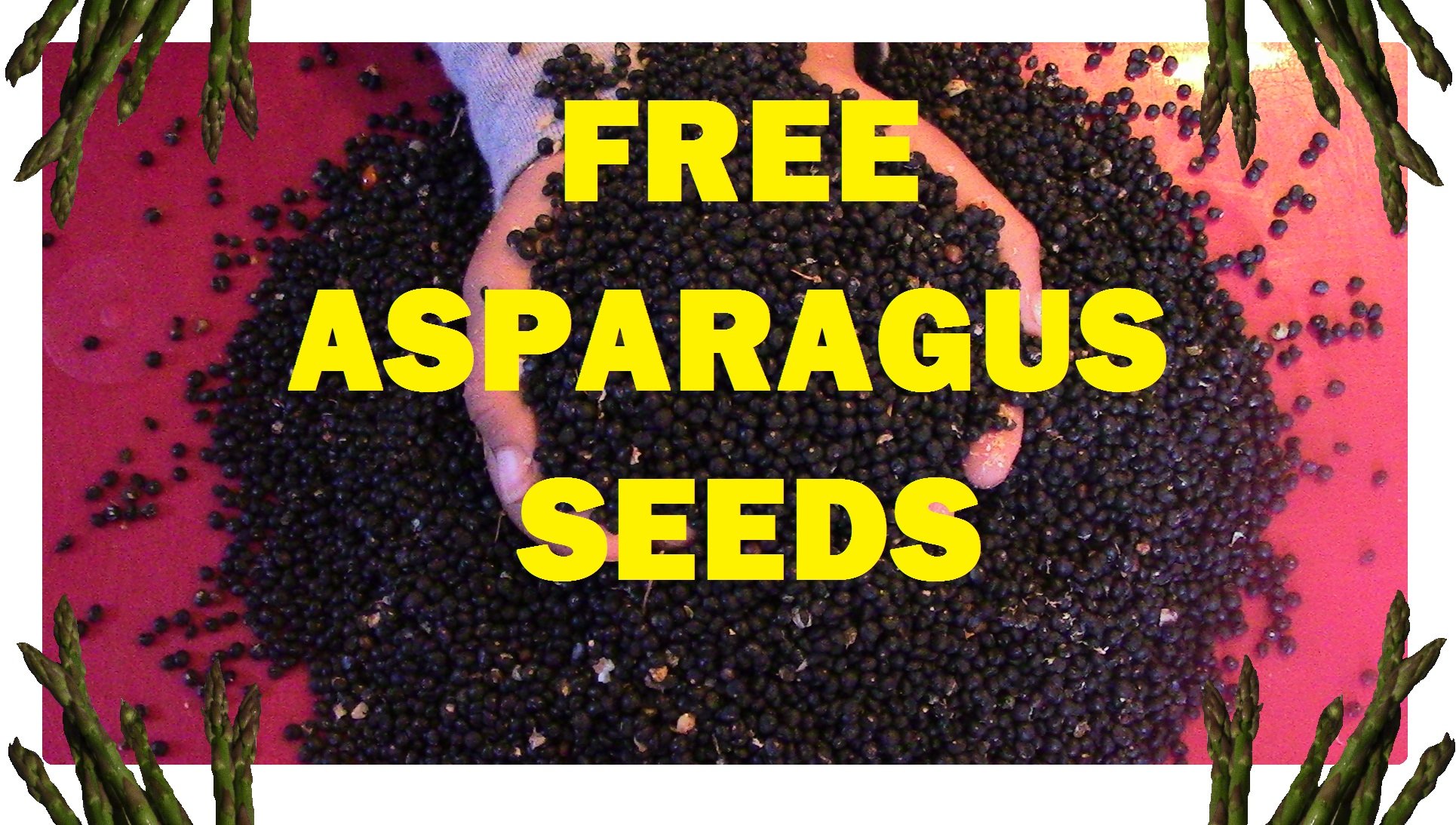
When it comes to both harvesting produce and obtaining free seeds for planting, having access to wild, natural growing plants is a huge blessing. It saves on the cost, and may often even give you a better source.

In central Wisconsin, a peculiar opportunity exists that many locals take advantage of. Many of the ditches in some rural areas are home to thousands of wild Asparagus plants. They line the ditches between the public roads and the private fields. Whether they are actually a native variety or a naturalized crop from times past, I do not know. I do know that they are not the current crop of choice in those fields, and that many enjoy foraging for this free food every spring.
Many times I too have joined in on picking the fresh wild Asparagus shoots when they burst forth from the earth in the spring and early summer. Often, we would wind up with many to spare and would freeze them or gift them to our friends and family members. To take a short walk and collect $20 or $30 worth of Asparagus is time well spent in my book.
However, most only seem to concentrate on the spring harvest.

Last year, I noticed that there was a fall harvest too that was available for collection. Asparagus is a perennial plant that will come back year after year. Each year, the root system or crown will shoot up spears in the spring. It is these spears that are harvested and sold as a food. If the spears are left to grow, they turn into a tall fern-like plant. When a group of Asparagus grow closely together, they will looks like a wispy green bush. Personally, I take note of where I see these plants in the summer and the fall, because I know that each spring the delicious green spears appear first in that same location.
MALE ASPARAGUS FERNS
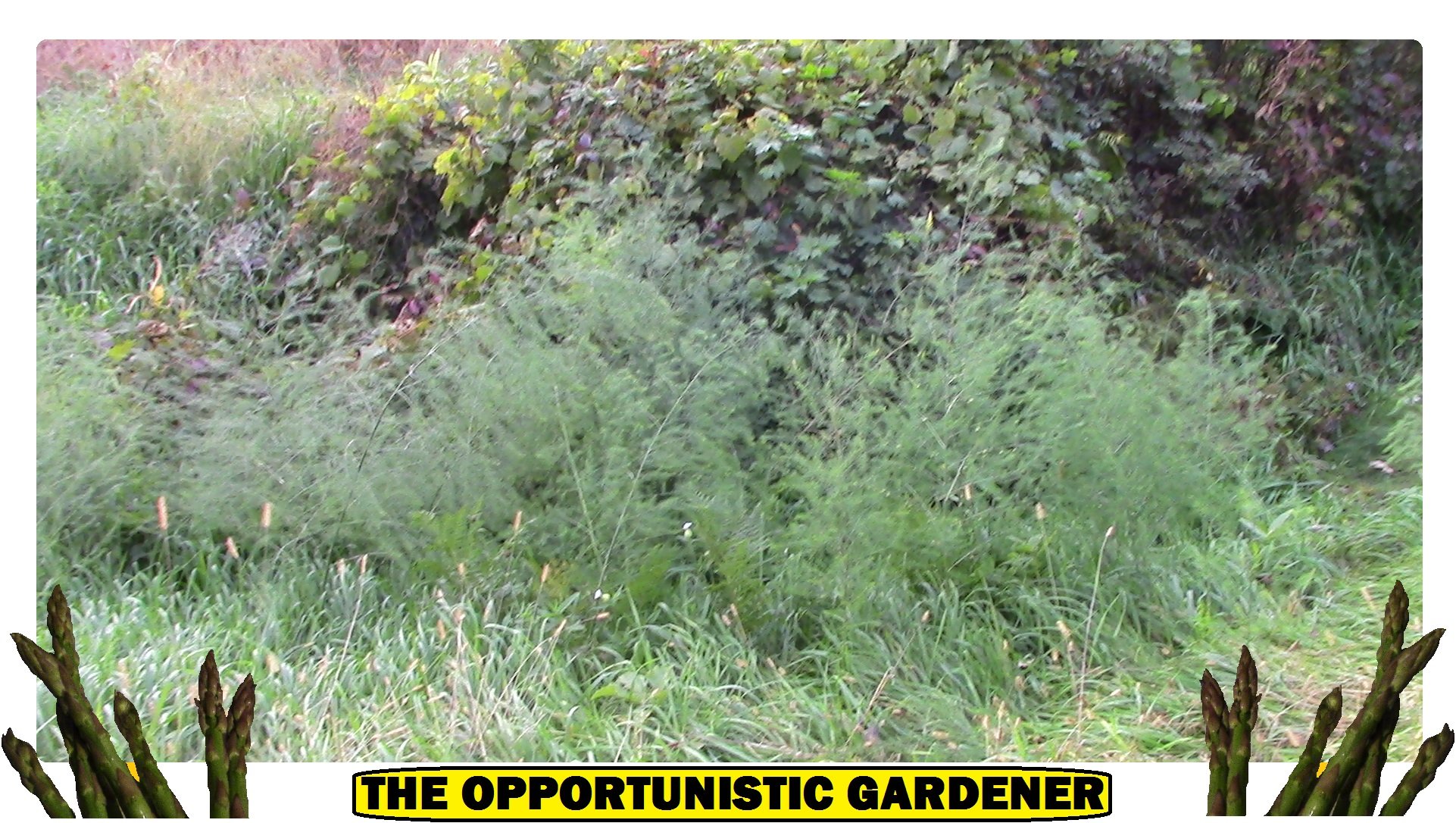
FEMALE ASPARAGUS FERNS
Asparagus plants have both male and female plants. Eventually, the female plants will become covered in bright red “berries” that contain the seeds. These “berries” will sometimes be so abundant on a plant that it will look like a tiny green Christmas tree covered in little red ornaments. Though the young spears are fully edible and a delicious food source, the bright red “berries” are poisonous and should not be eaten. Since I was just enjoying both Wintergreen berries and Partridgeberries with my children, I have to make very sure that they all understand not to eat the “berries” found on the Asparagus, which look very similar.
Each of the little red “berries” found on the female Asparagus plants contain multiple hard, black seeds. A pile of these seeds closely resembles black aquarium gravel. Since I plan on growing a lot of our own food and also hopefully having enough of a harvest to sell, free seeds, especially from edible perennials, are right up my alley.
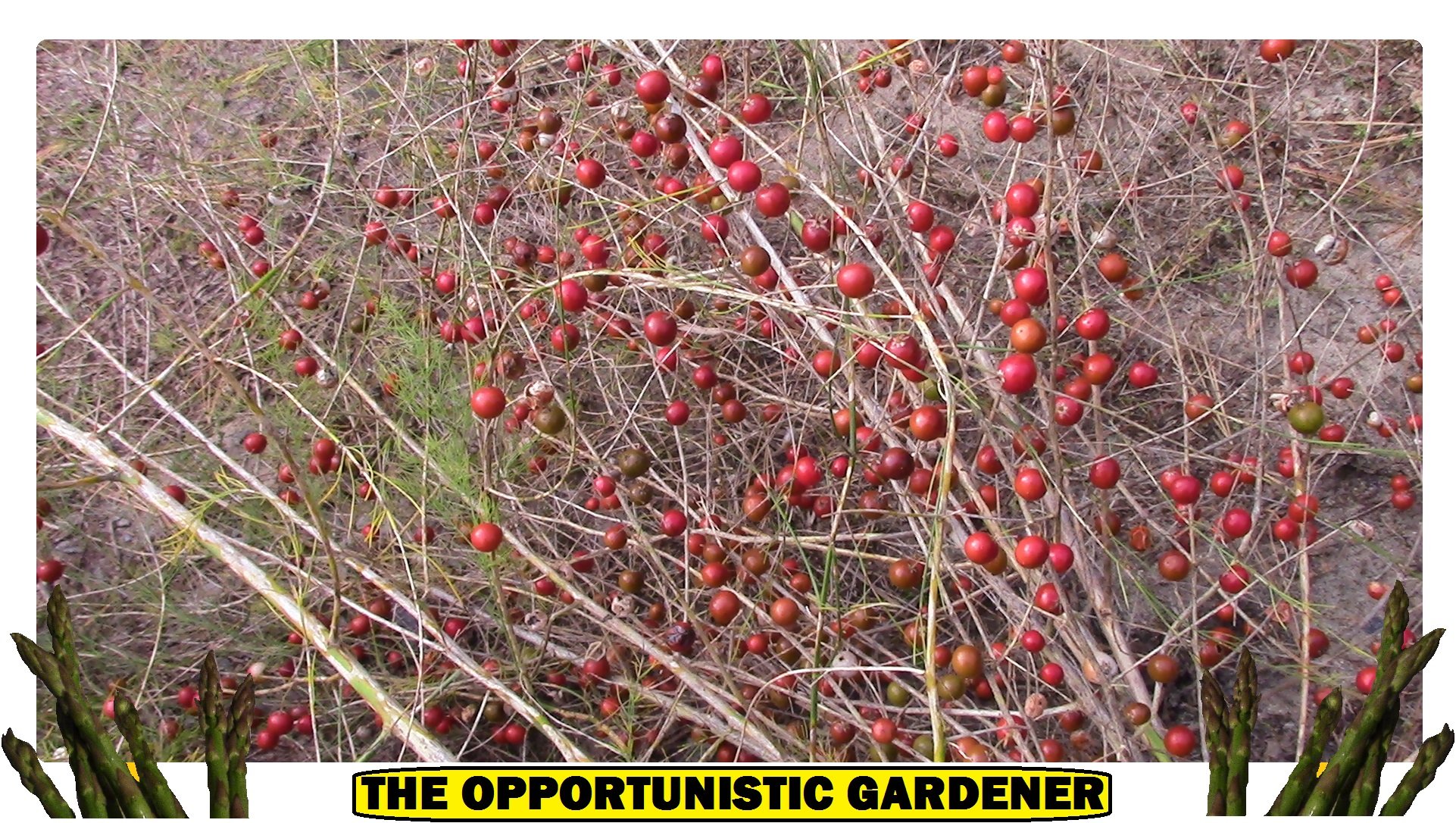
Last year, I took a few walks along these roads and harvested a lot of these seeds. Since the plant is done growing at that point anyway and about to let the top die back for the year, no harm is inflicted upon the plant if the top is just broken off at this point. It is the crown beneath the surface is necessary for the plant to survive through the winter, and it will be the source of the spears next spring.

If you are looking to establish an Asparagus patch in your yard, the quickest and easiest way is to purchase some crowns (root systems) and bury them in the desired location. Asparagus can also be started from seed, but the process takes longer.
For me, collecting my own free seeds is a better option than purchasing the crowns, especially since having perhaps thousands of Asparagus plants is the potential goal. When I have land to dedicate to planting them, these seeds could easily be used to start a patch that will produce for decades to come.

When starting Asparagus from seed, it will be years before I will be able to harvest any Asparagus from it. A few years after planting the seeds when the spears begin to look big enough to eat, those spears will provide the crowns with some essentials for plant life, just as the crowns do for the spears and eventually the “ferns.” If all the spears are broken off too early, the crown will die, and you will end up with no Asparagus plants. Until a patch is established, it can be a delicate waiting game.

To wait a few years before I harvest any is not that big of a deal though, because an established Asparagus patch can produce for 30 years or more. It is that incredibly kind of return on my investment that excites me.
If I can harvest the seeds once and plant them once and get decades worth of food from the patch, it seems like a wise investment of my time and energy.
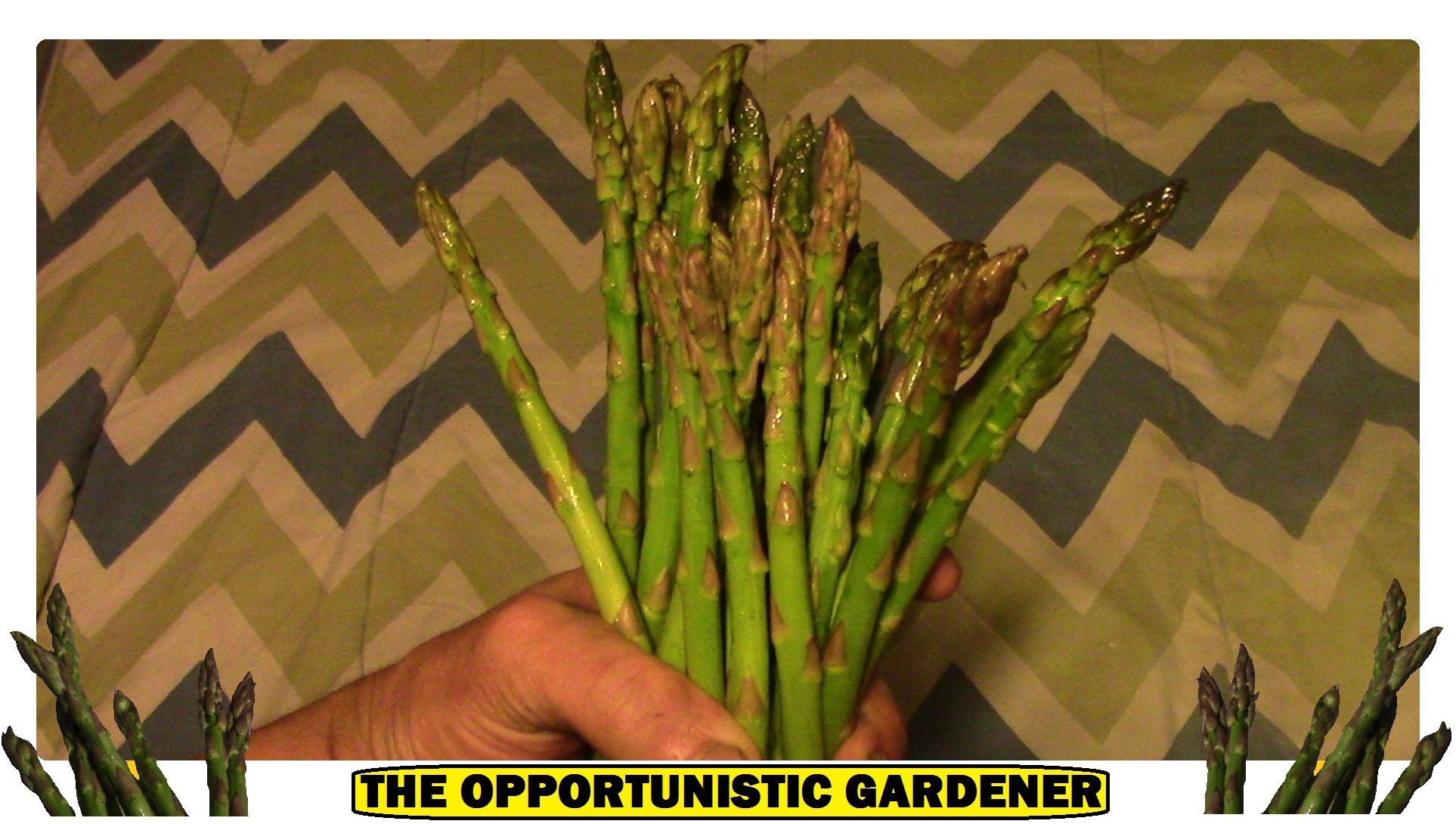
With the price of Asparagus often being between $3 and $7 for a large handful, a patch with thousands of plants could pay off big time!
HOW TO PROCESS AND SAVE WILD ASPARAGUS SEEDS
I invented this process last year, but it works really well. It's the easiest way I know of to remove the seeds from the “berries." I'll explain the procedure first, and then show you some step by step photos.
Fill a large freezer bag with the collected wild Asparagus berries. Pop all the berries by rubbing them between your hands and drop them into a large bucket. Fill the bucket with water. Rub the submerged “berries” between your hands some more to continue popping the berries to free the seeds inside. Pour off the excess red water, but do not dump out the entire bucket. Most of the hard black seeds will remain on the bottom of the bucket. Refill the bucket and repeat the process until the water is clear and all that remains is clear water and black seeds. It usually takes me three or four times of repeating the process, but in the end, all you should have left is the small, hard, black seeds. I then pour them out onto a screen and spread them out to allow them to dry so that I can store them.

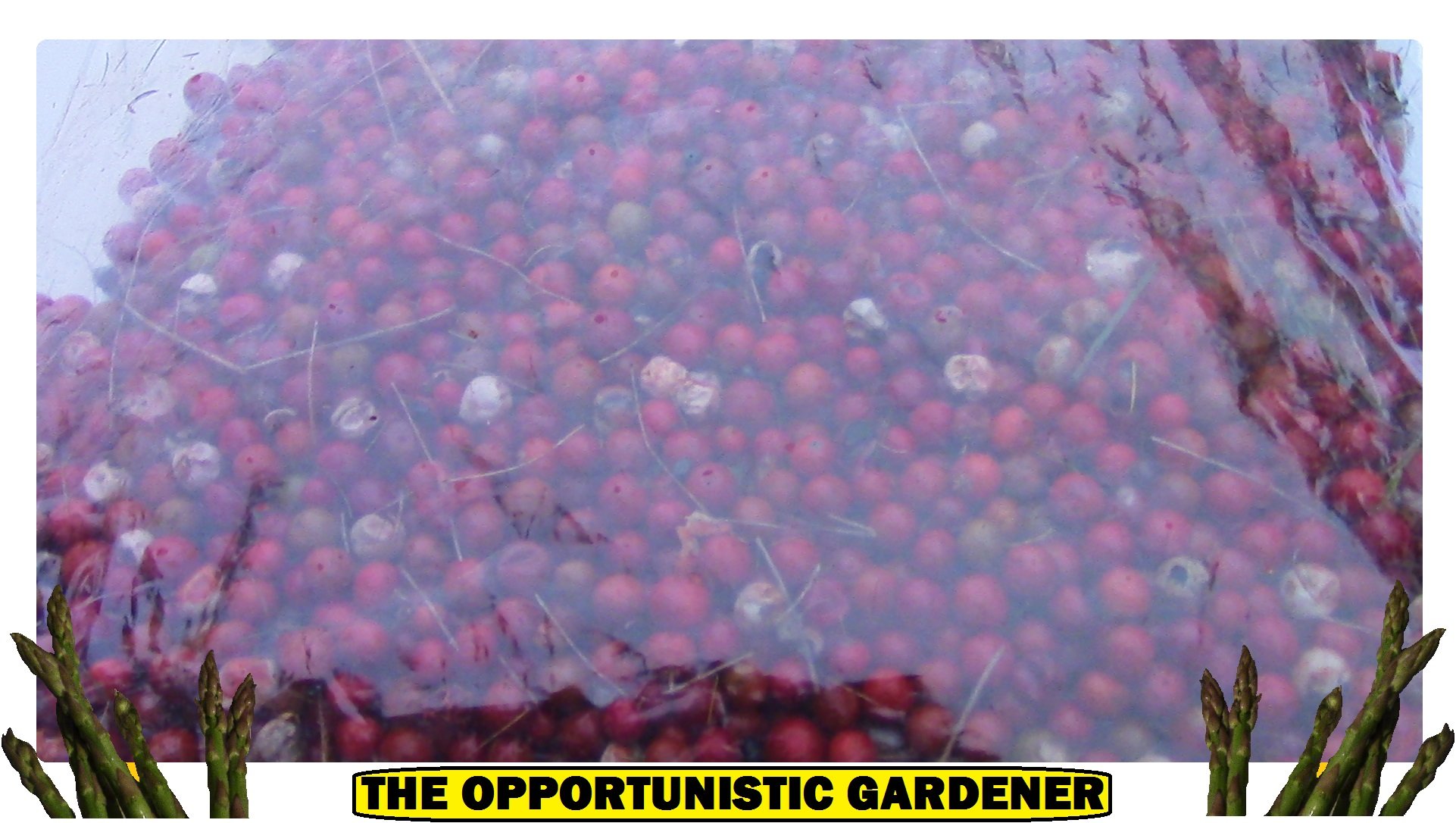
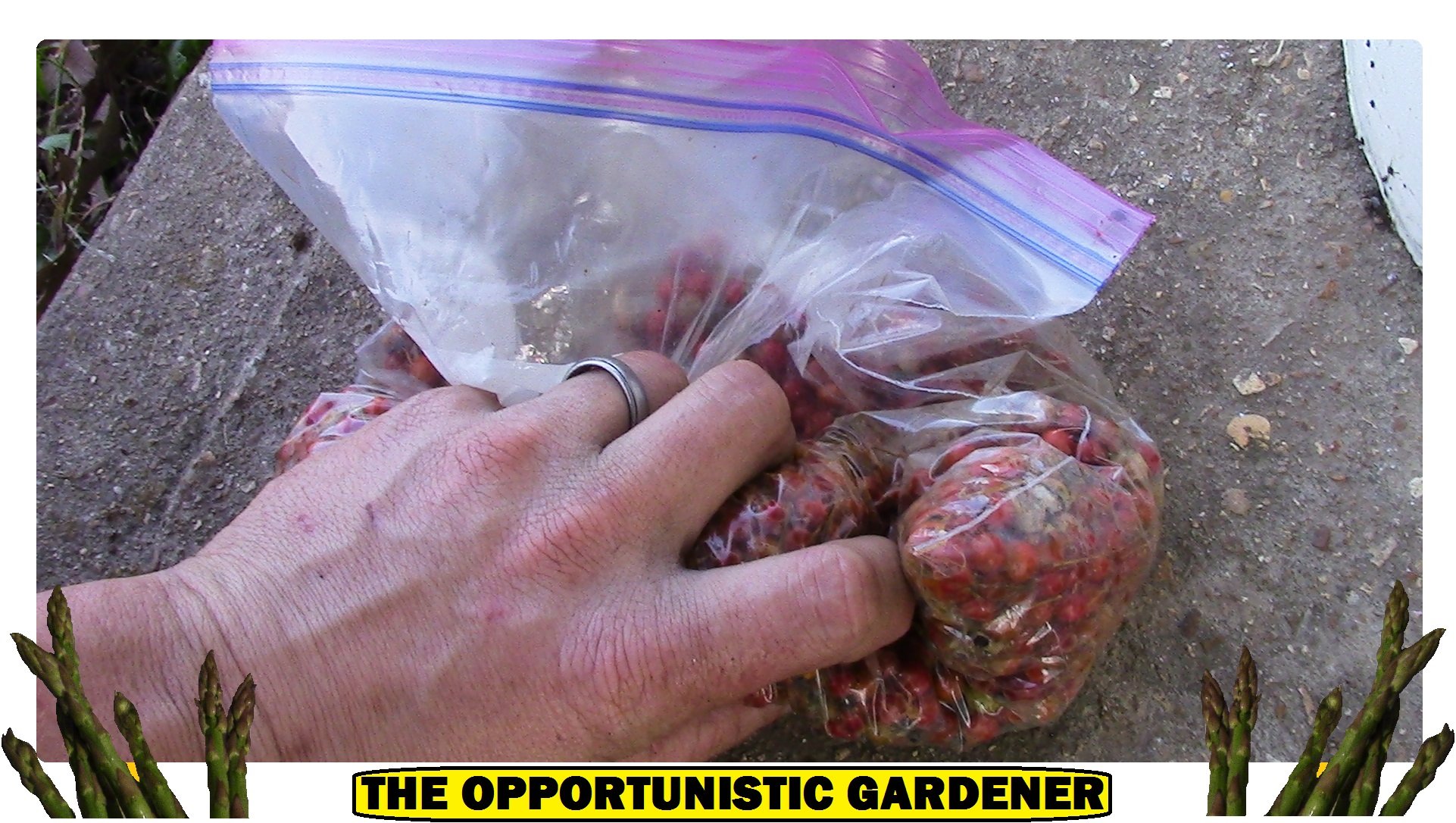
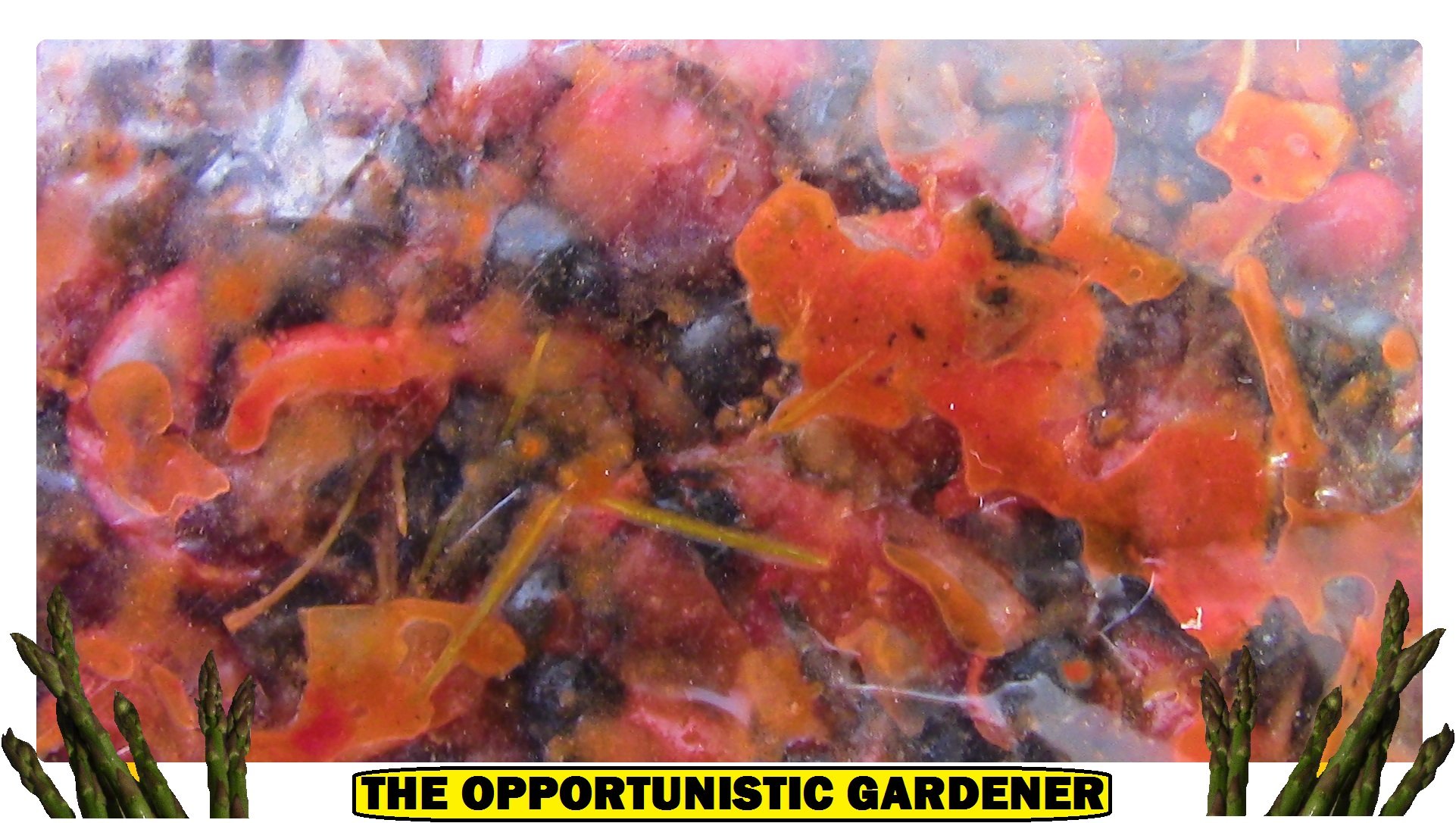
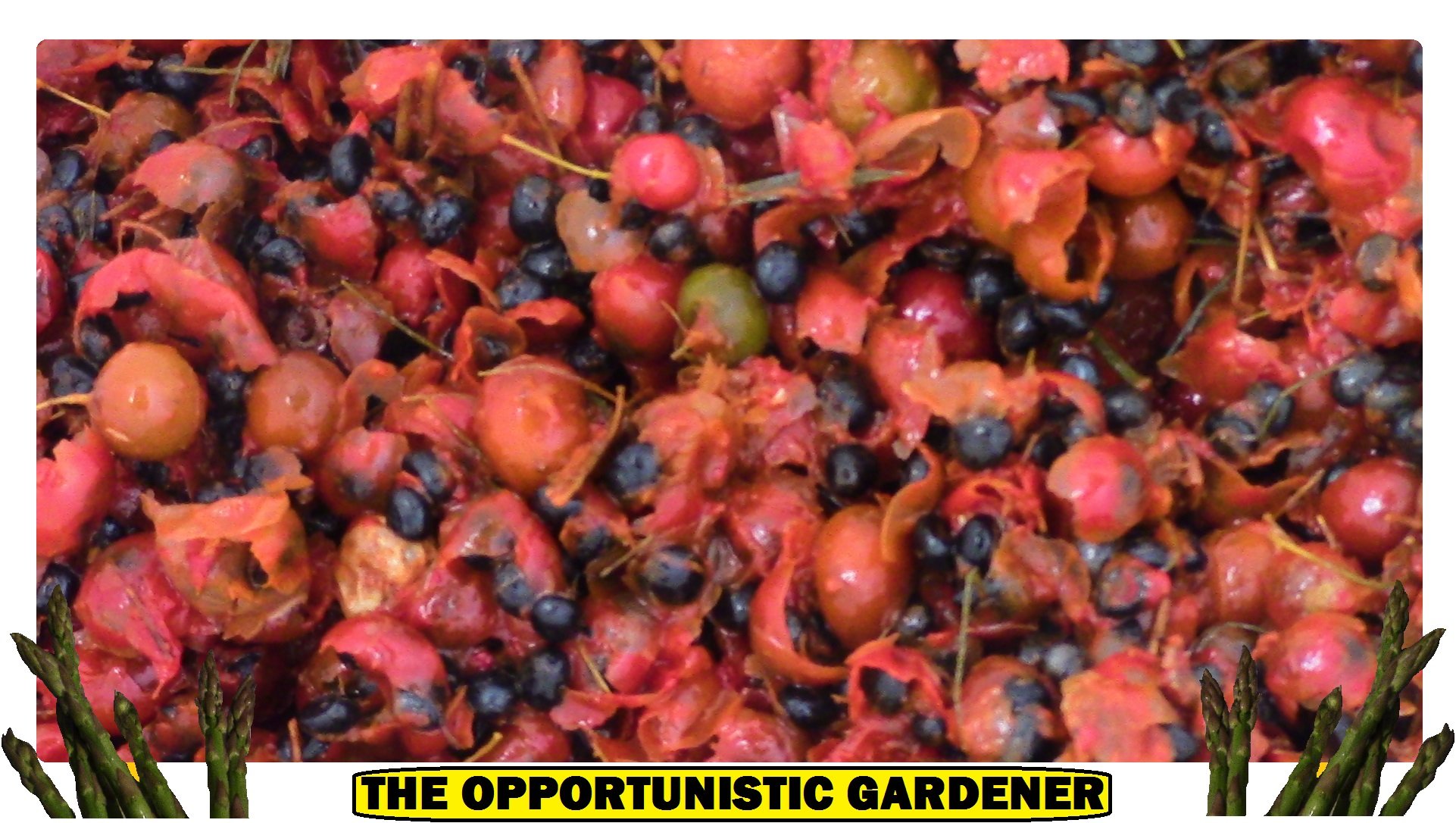
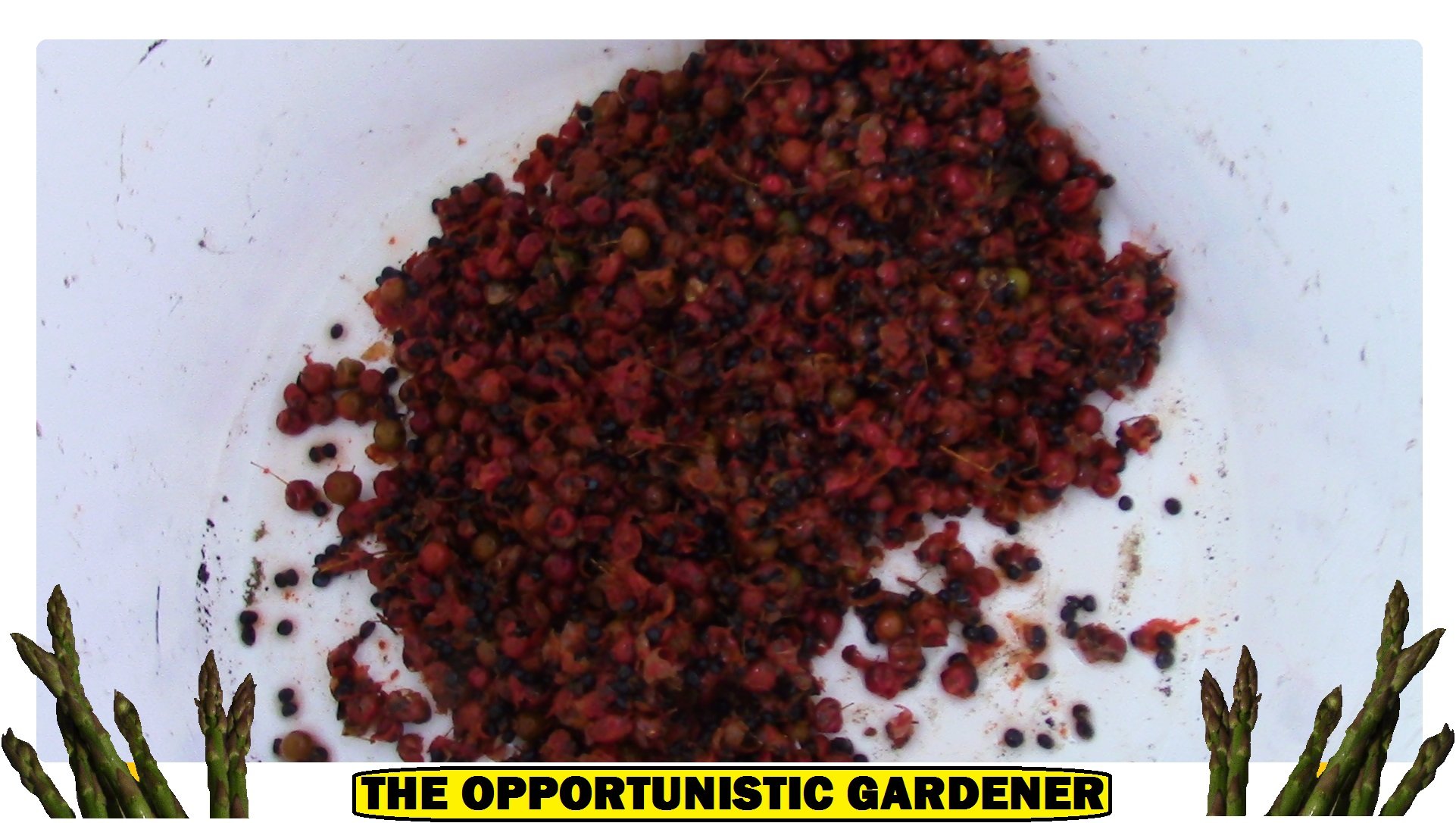
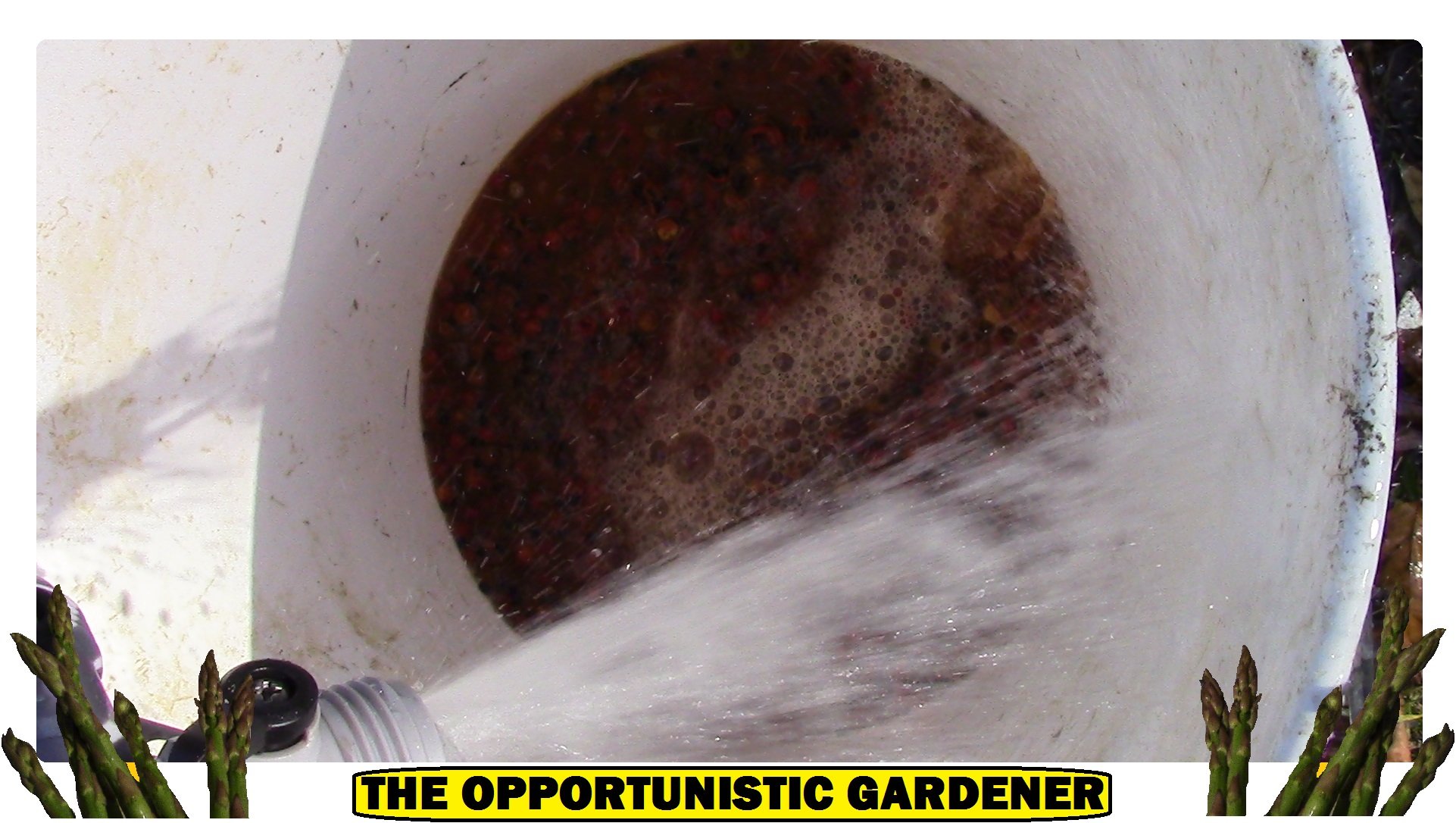
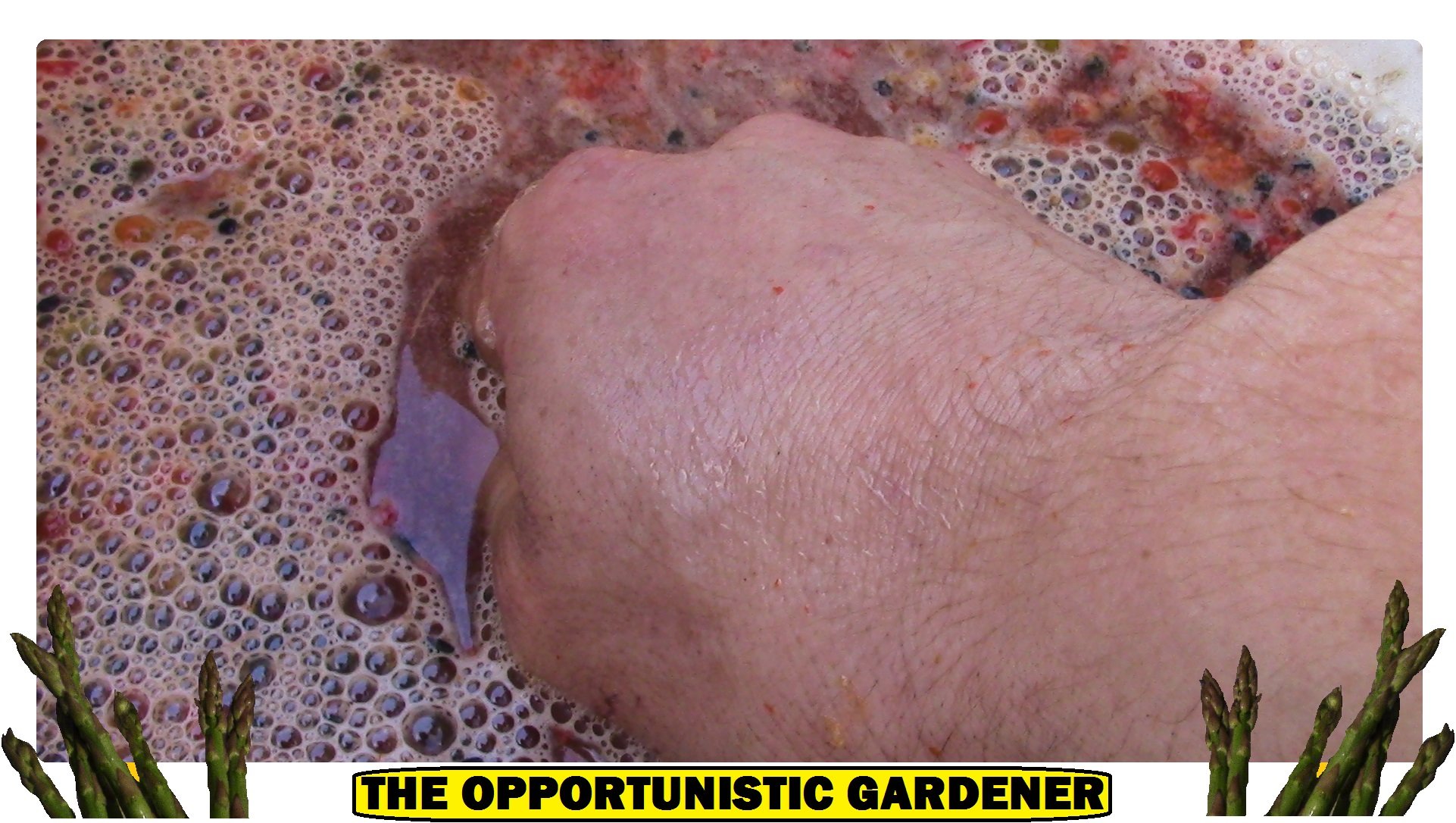
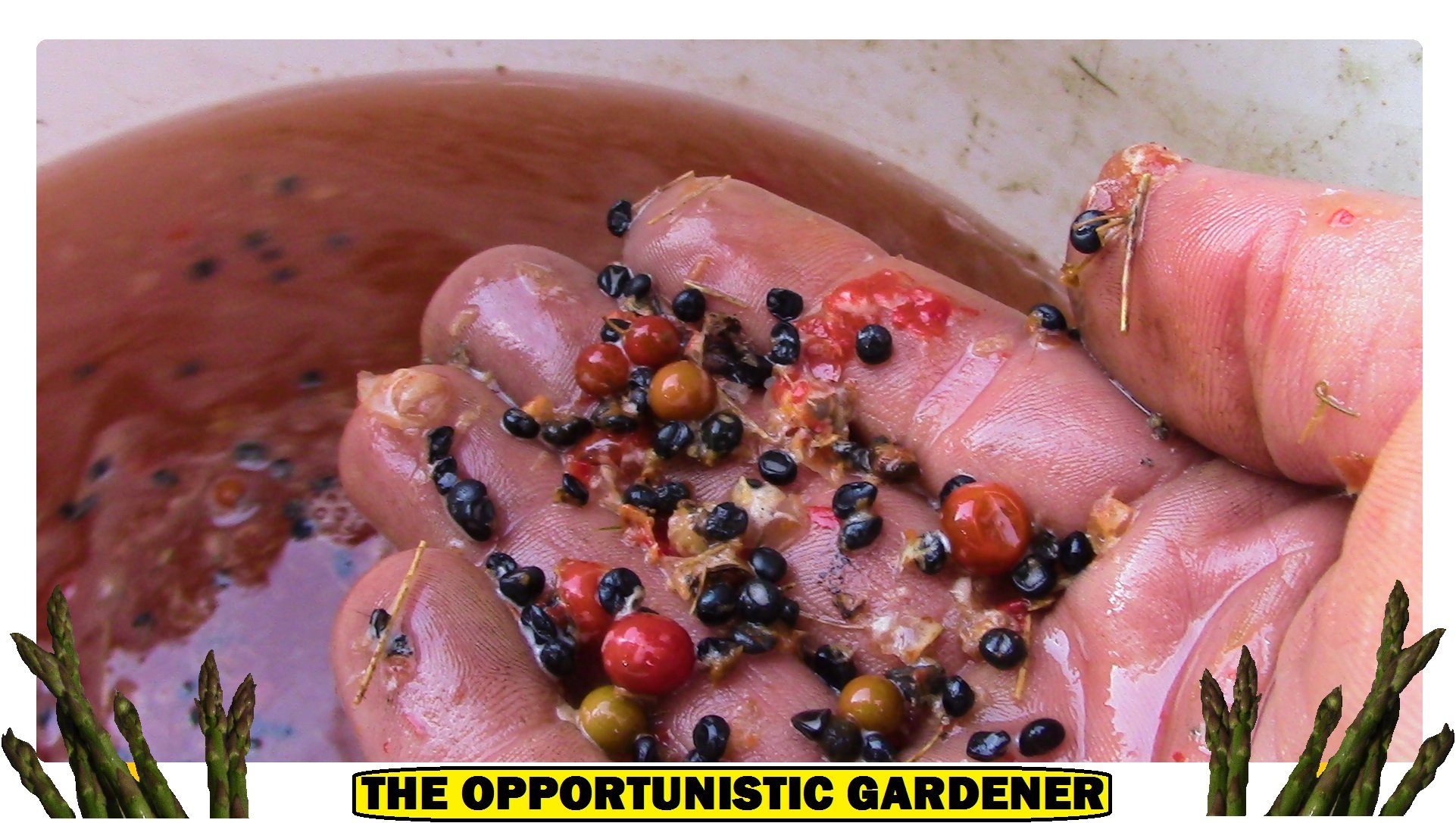
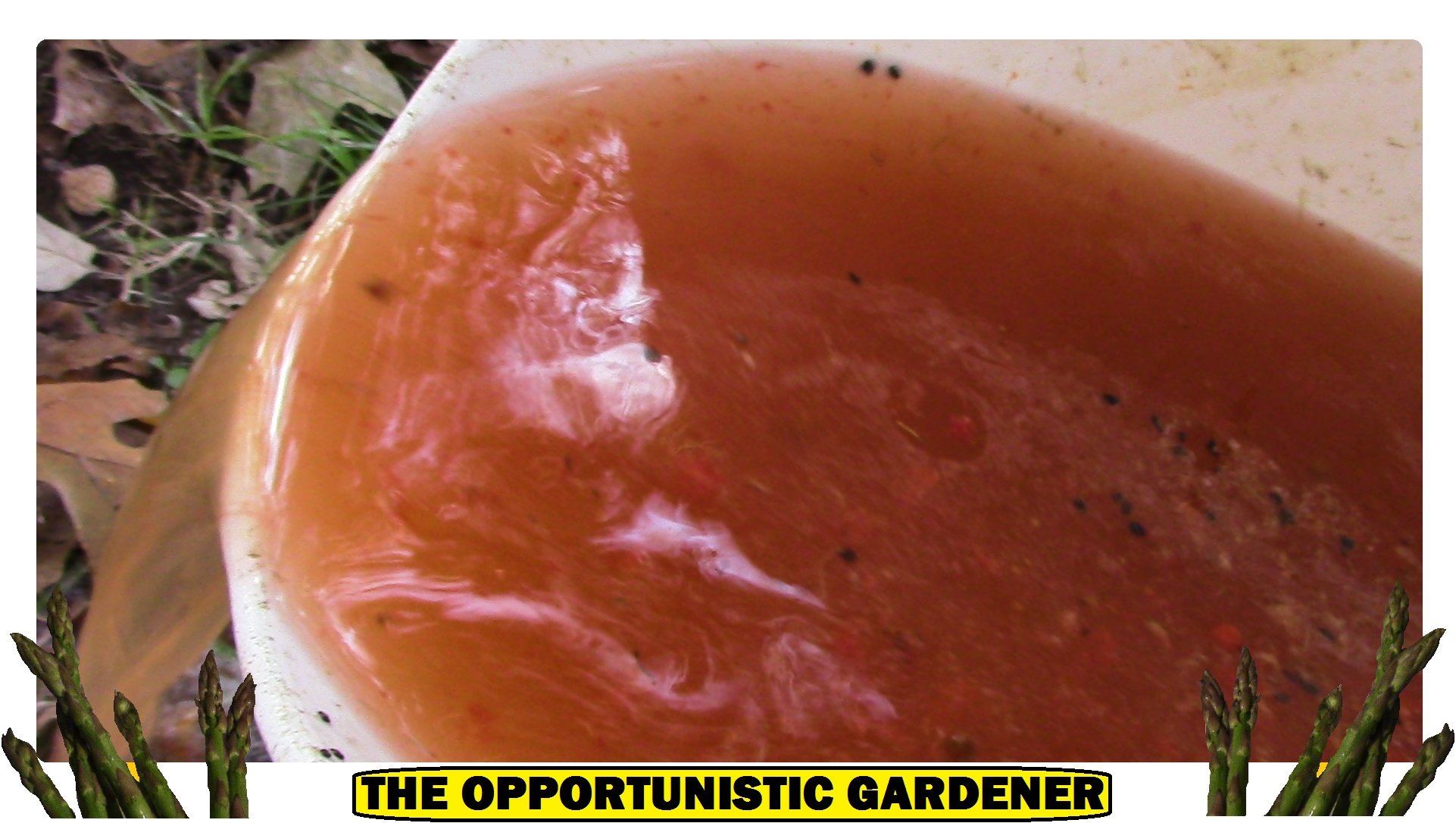
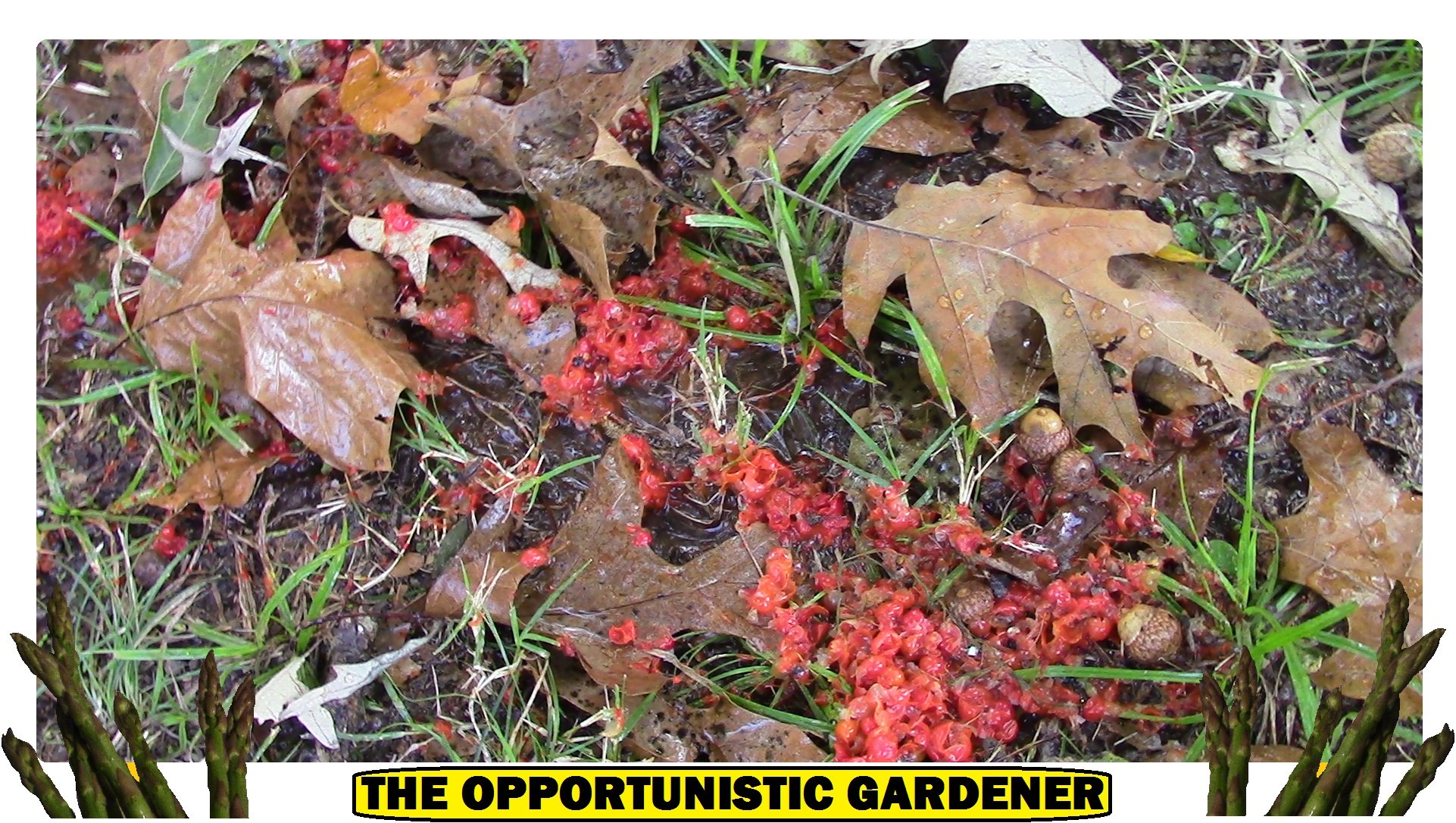
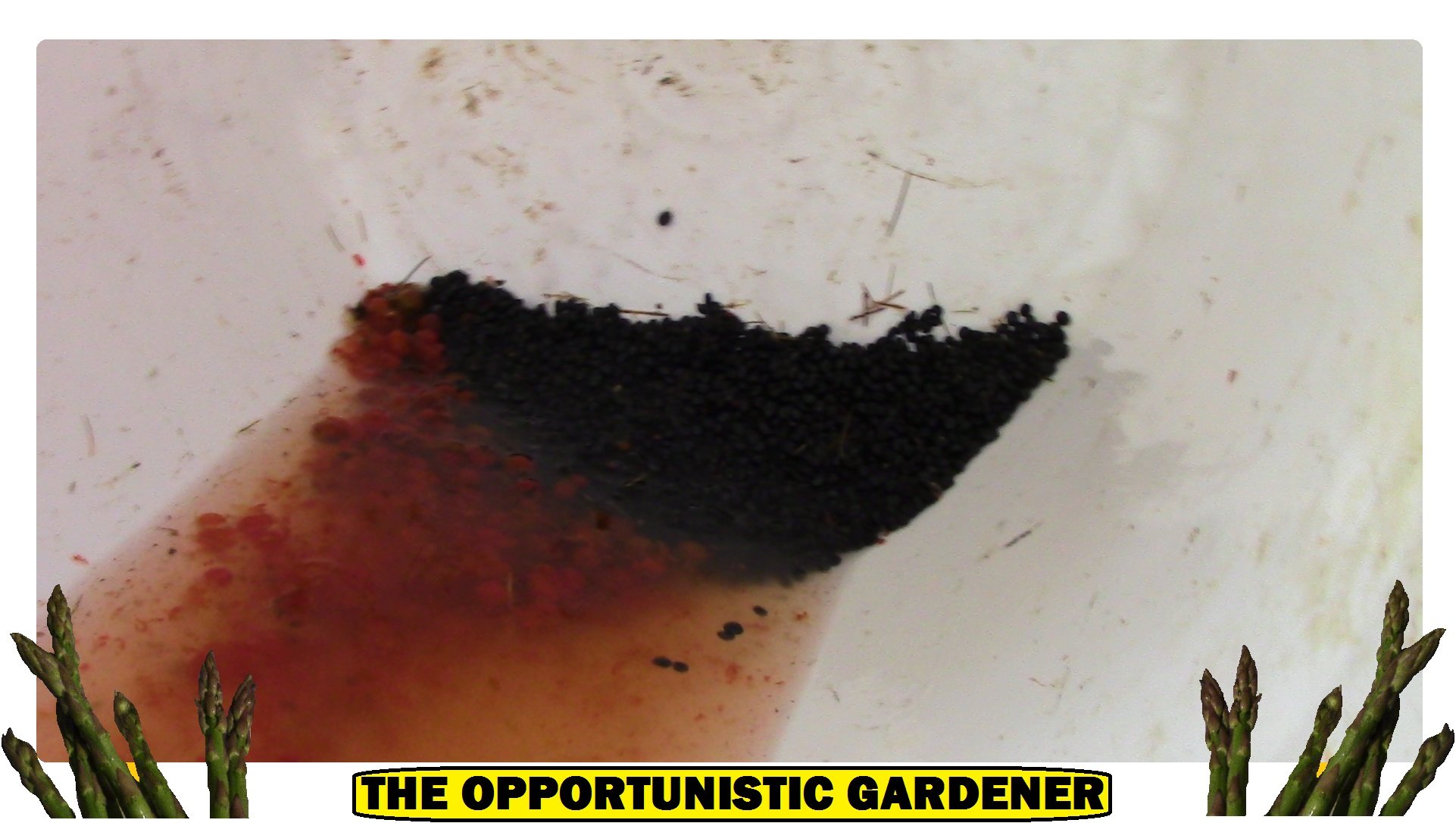

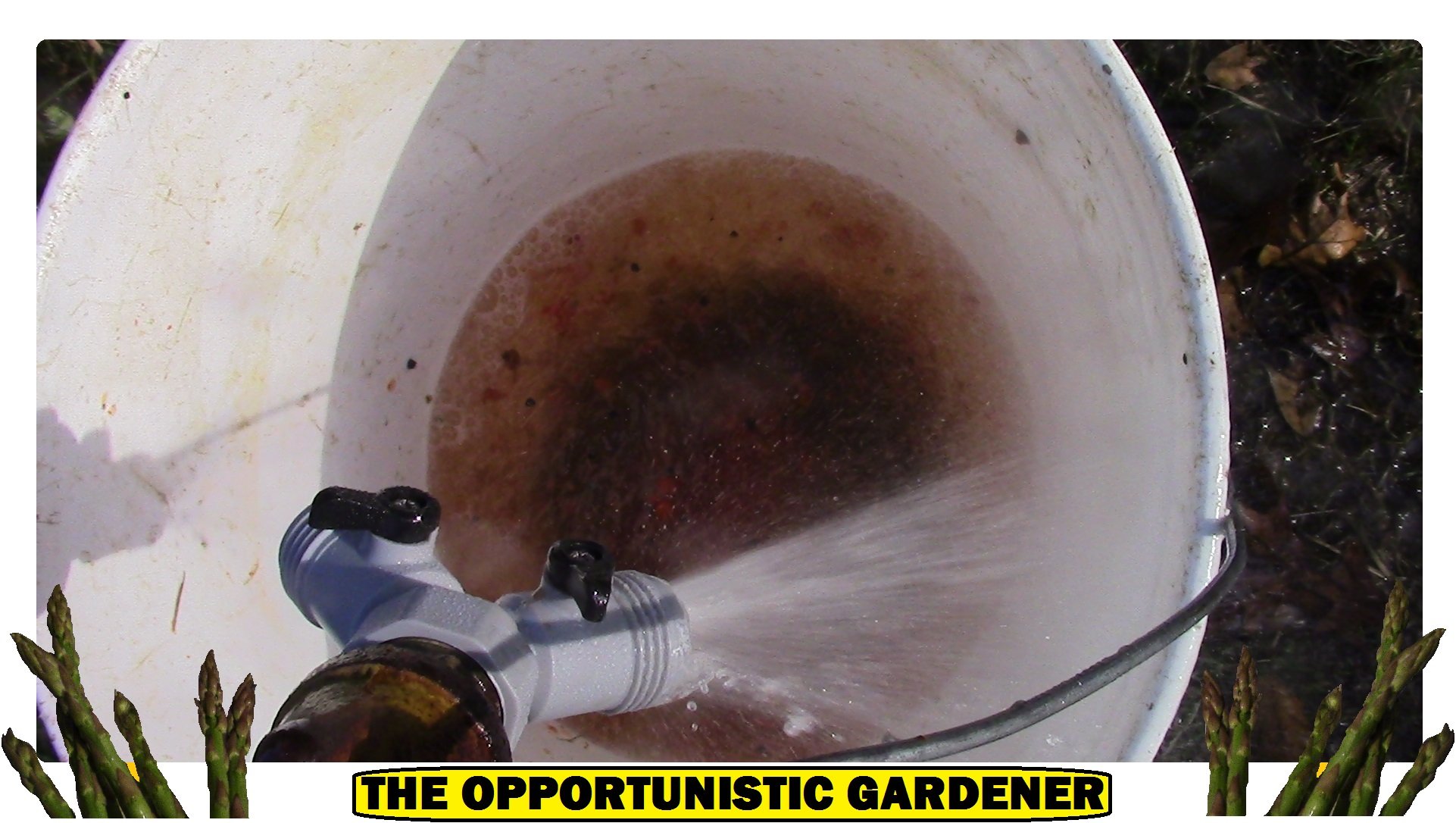
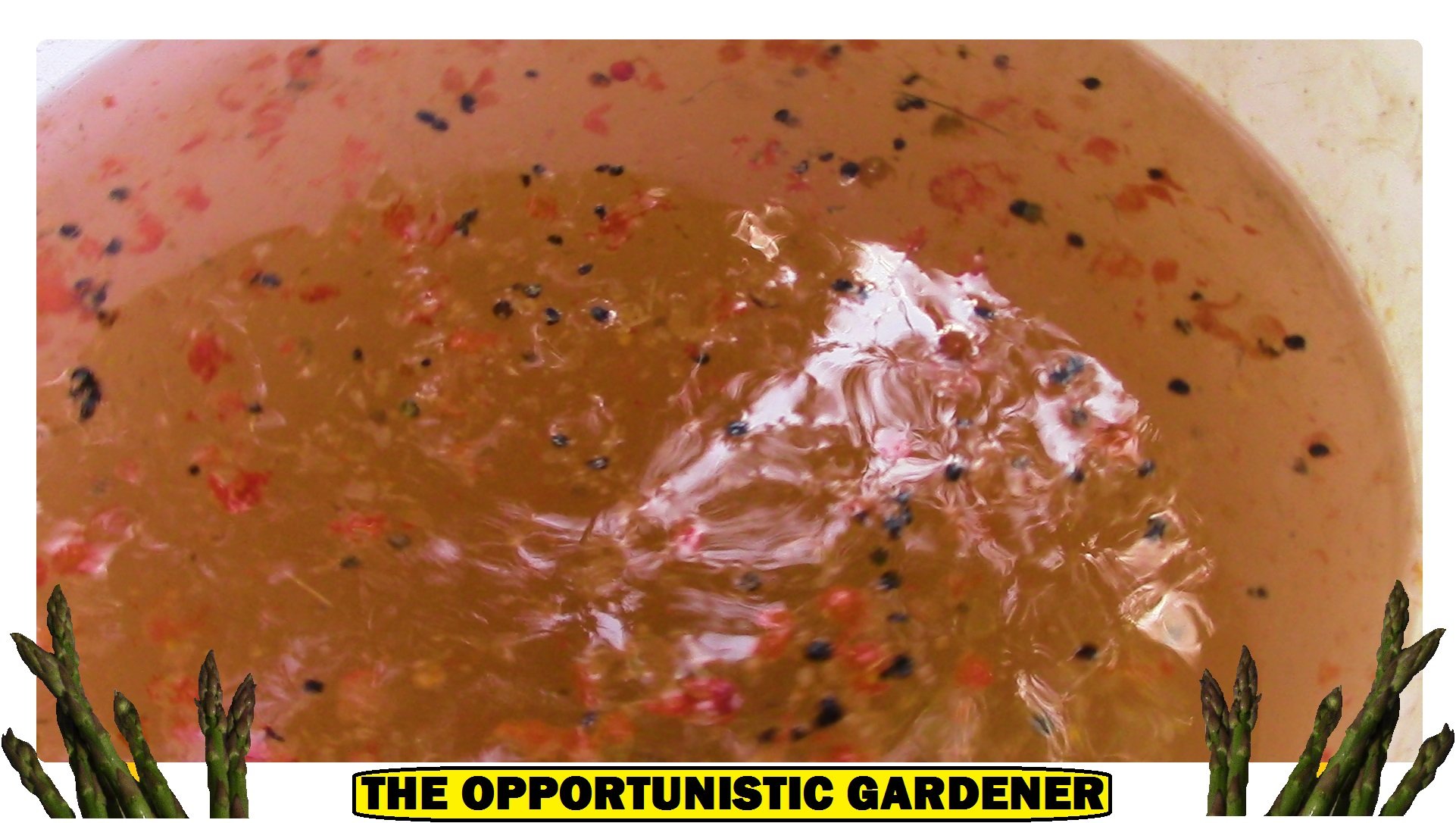
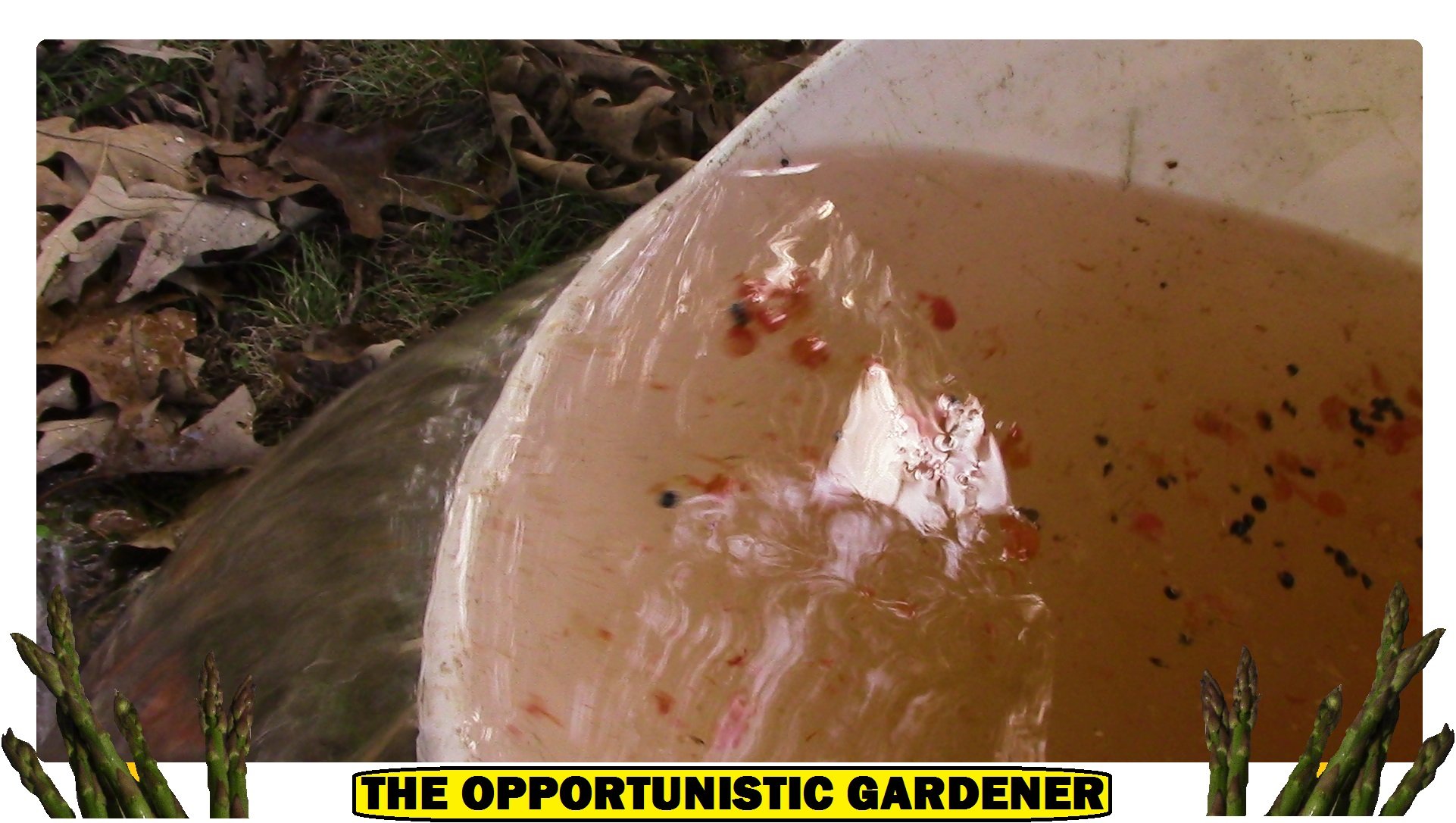
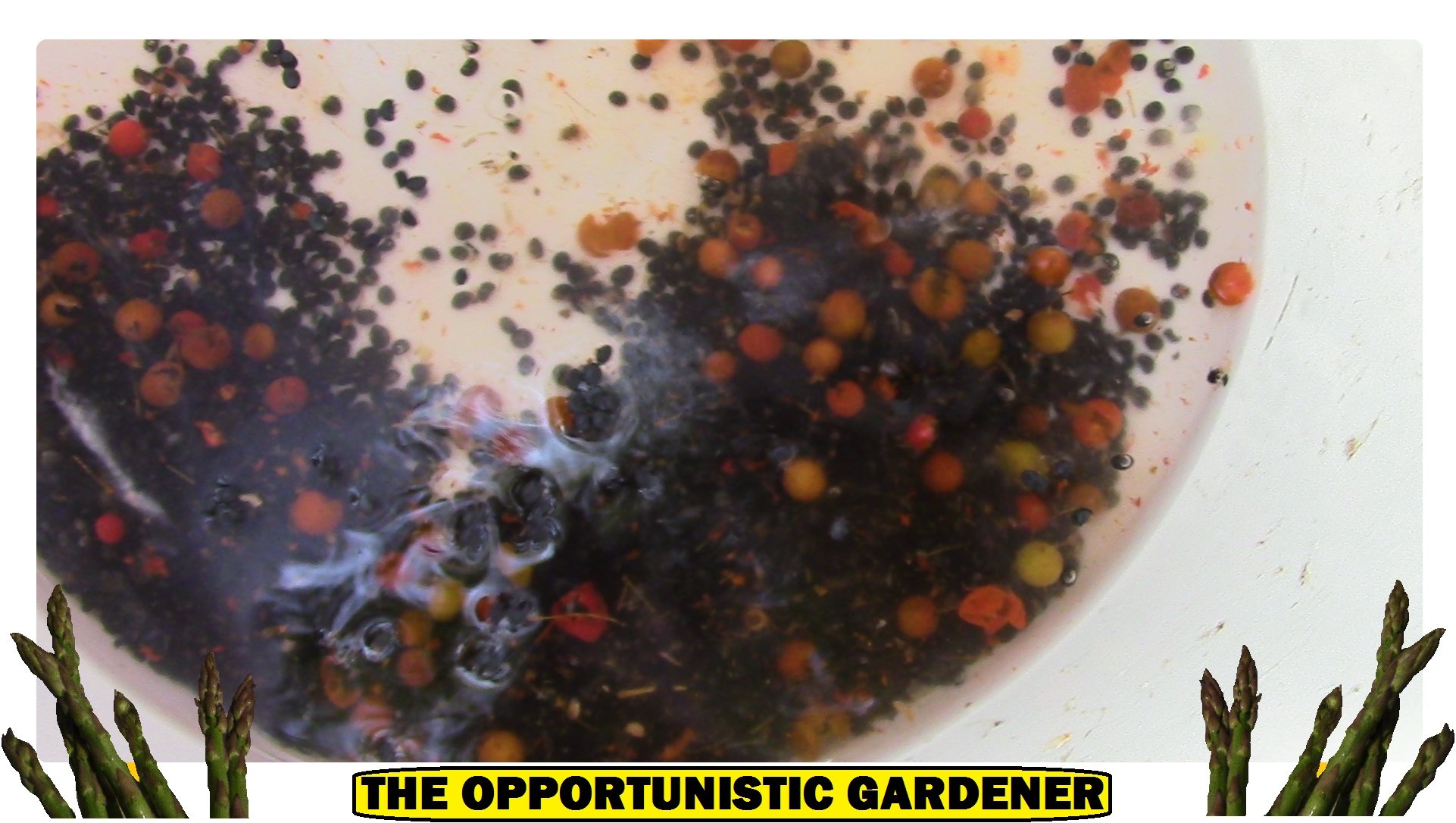

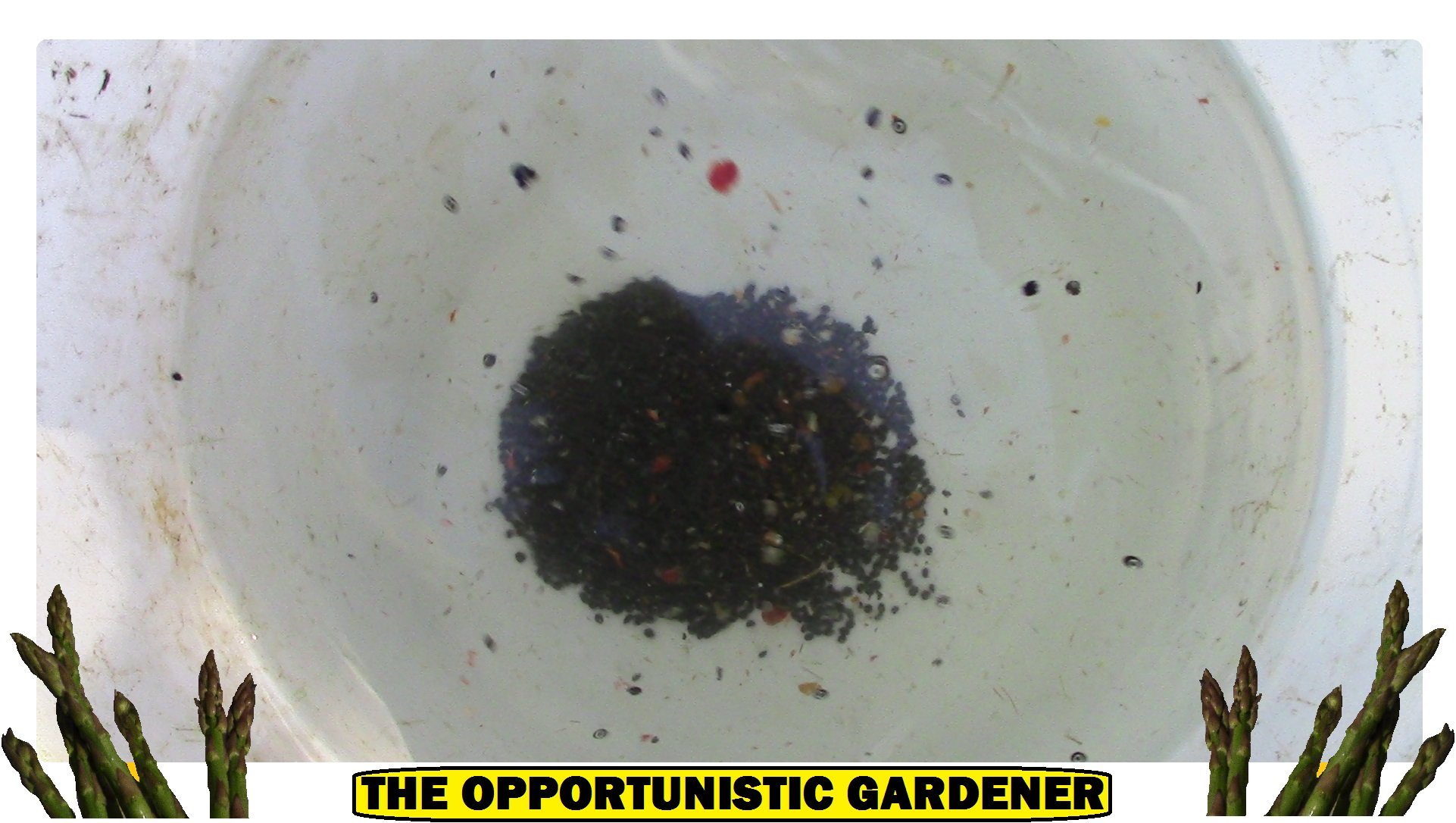
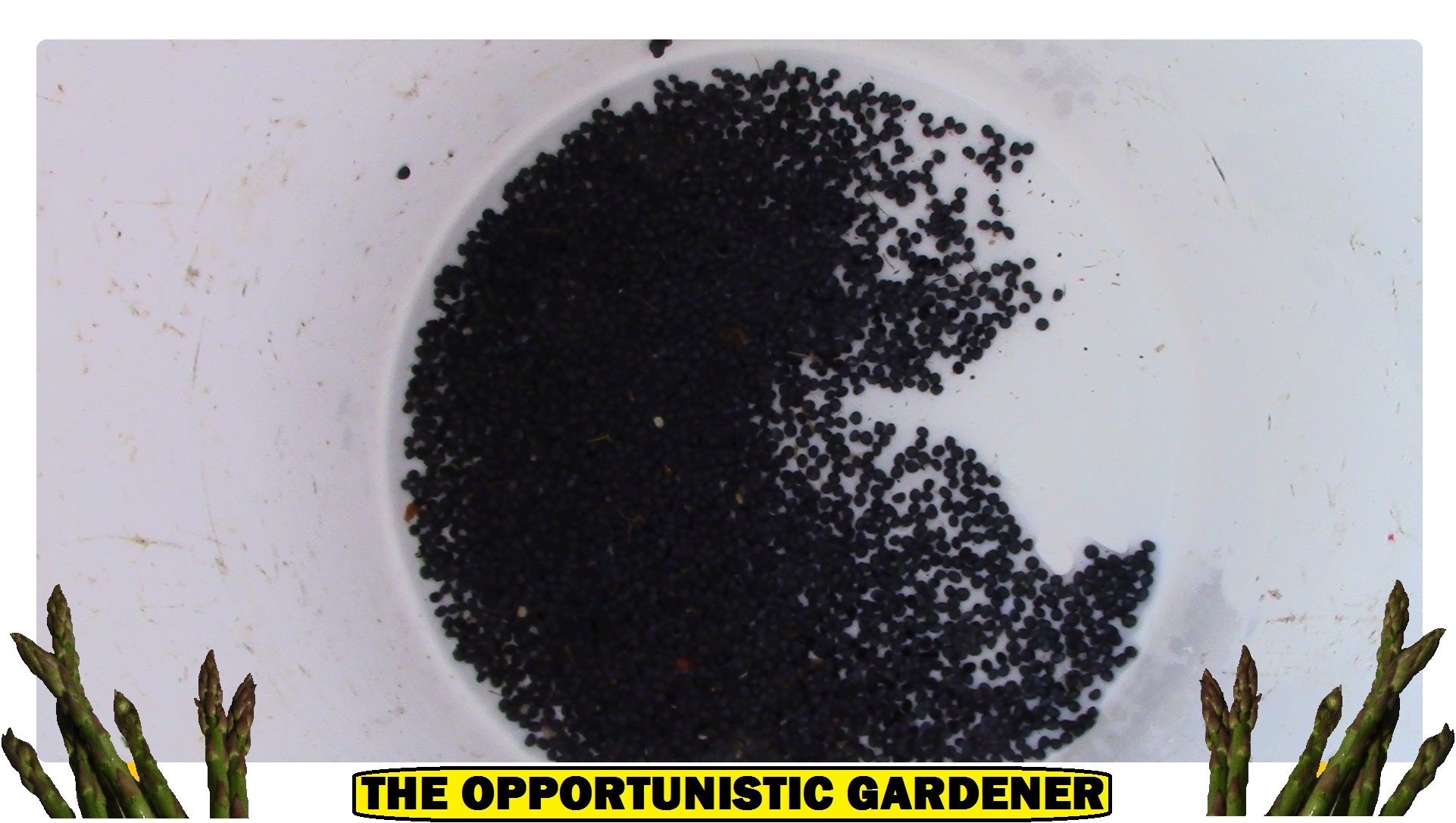
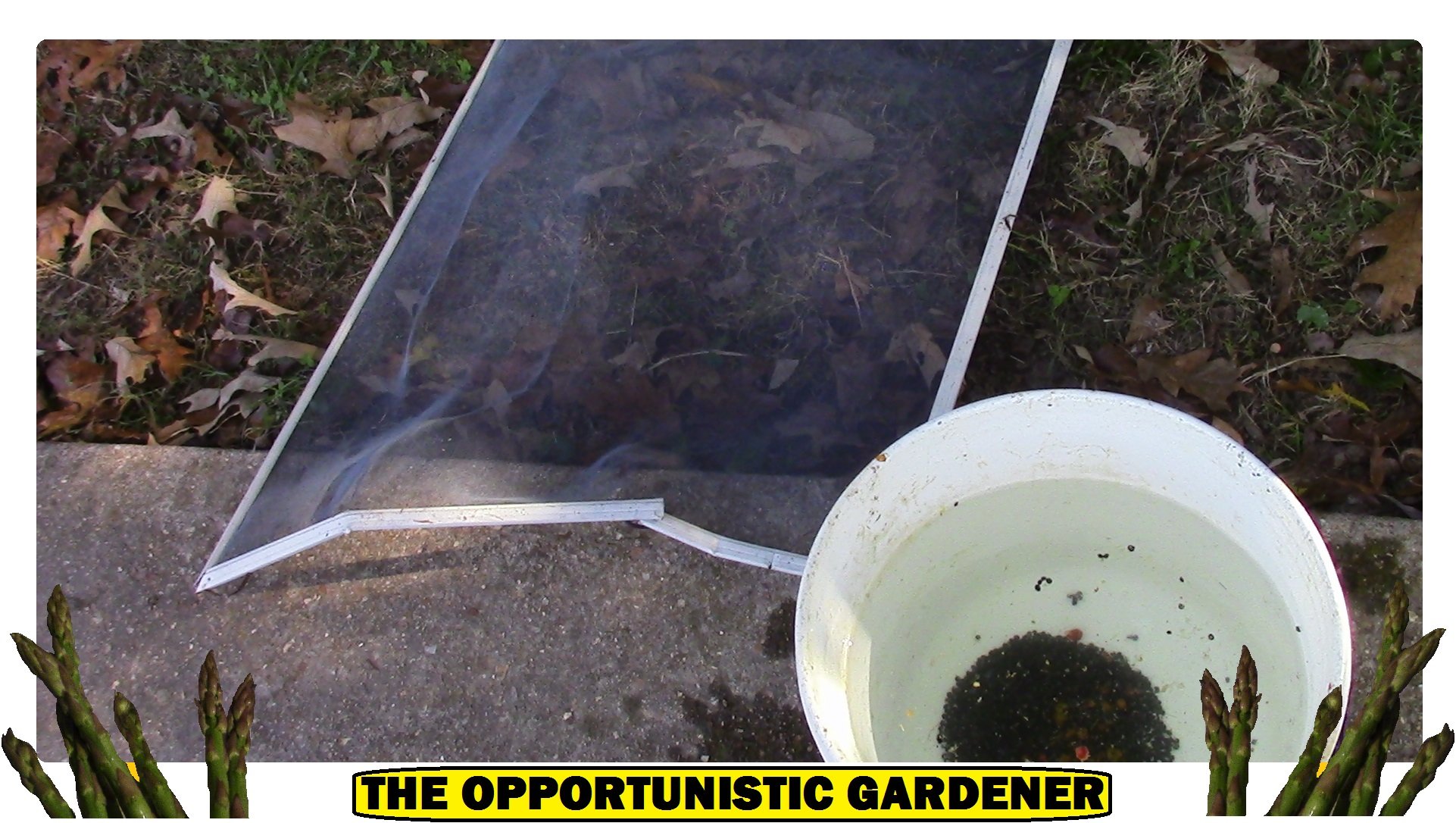
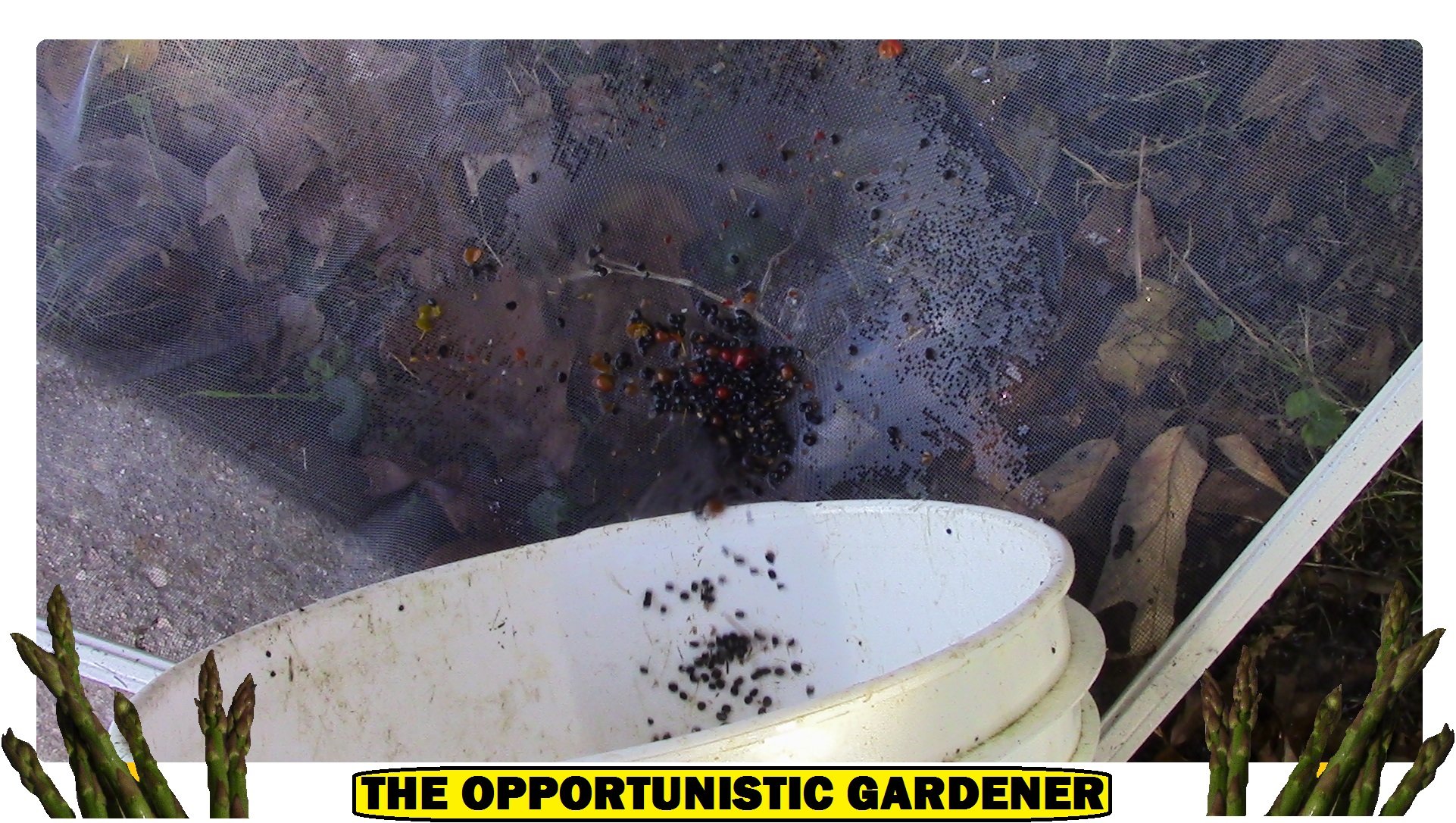
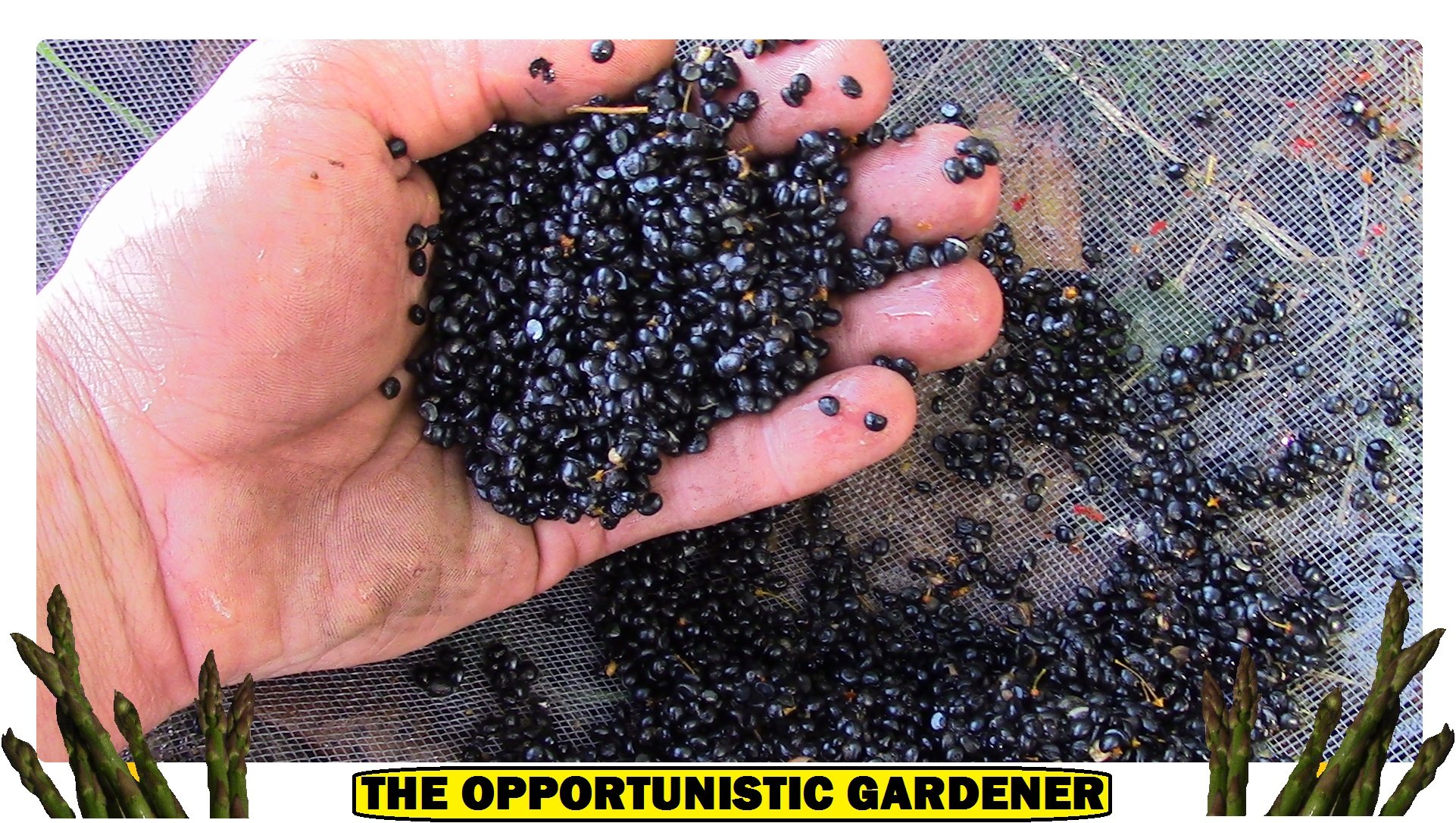
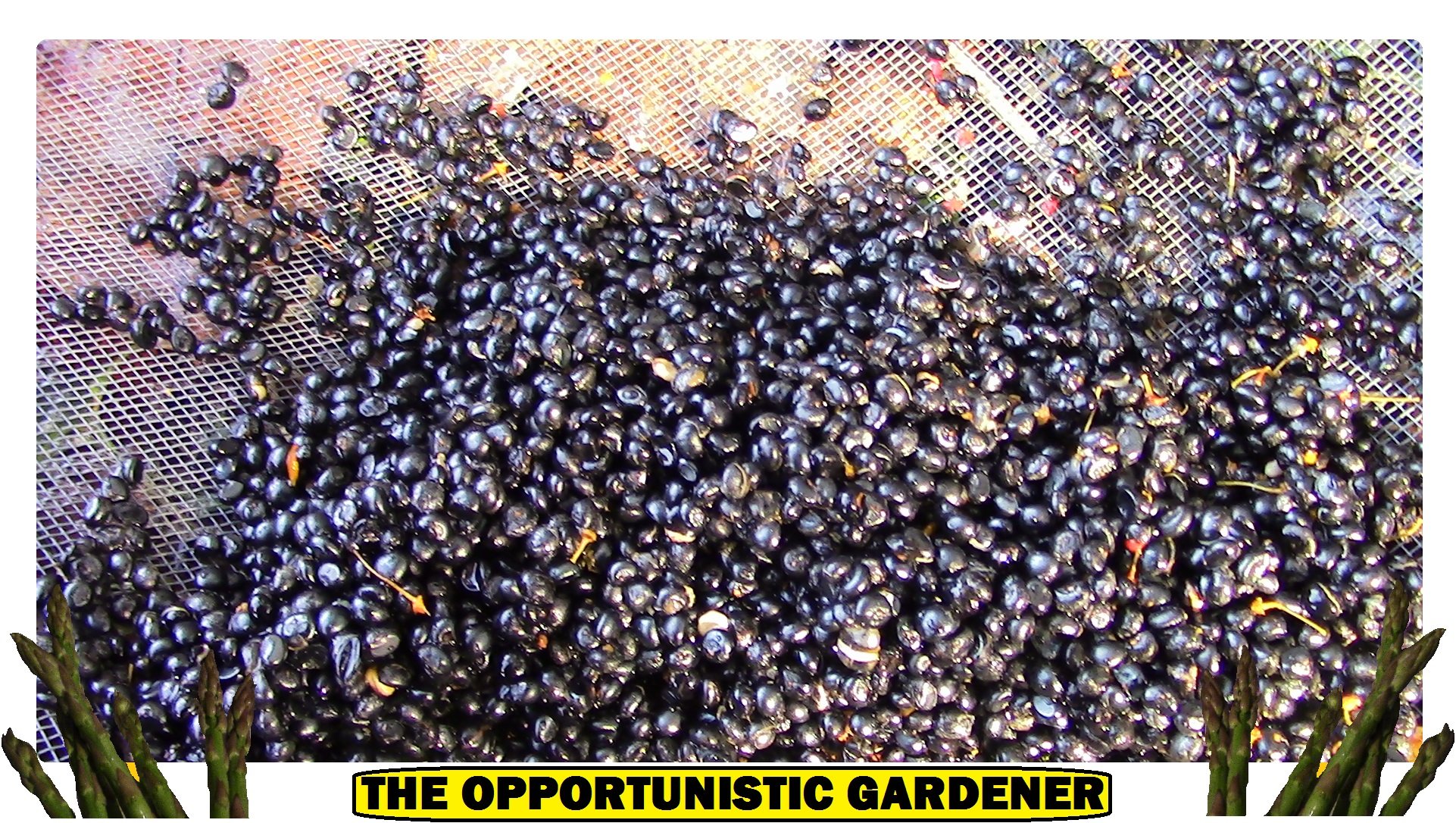

It's a simple method, and almost like a wet version of how people separate the wheat from the chaff. Grains were once beaten and then tossed into the air. The chaff, or outer shell, would be blown away by the wind and the "good" grain would fall back into the pile. In the method that I used, hand crushing the berries is like beating the grain, and dumping out the water is like the wind blowing away the undesired outer shell.
Even though Asparagus seeds can often be found online for around one cent per seed, using this process to get myself thousands of free ones certainly saved me some money!
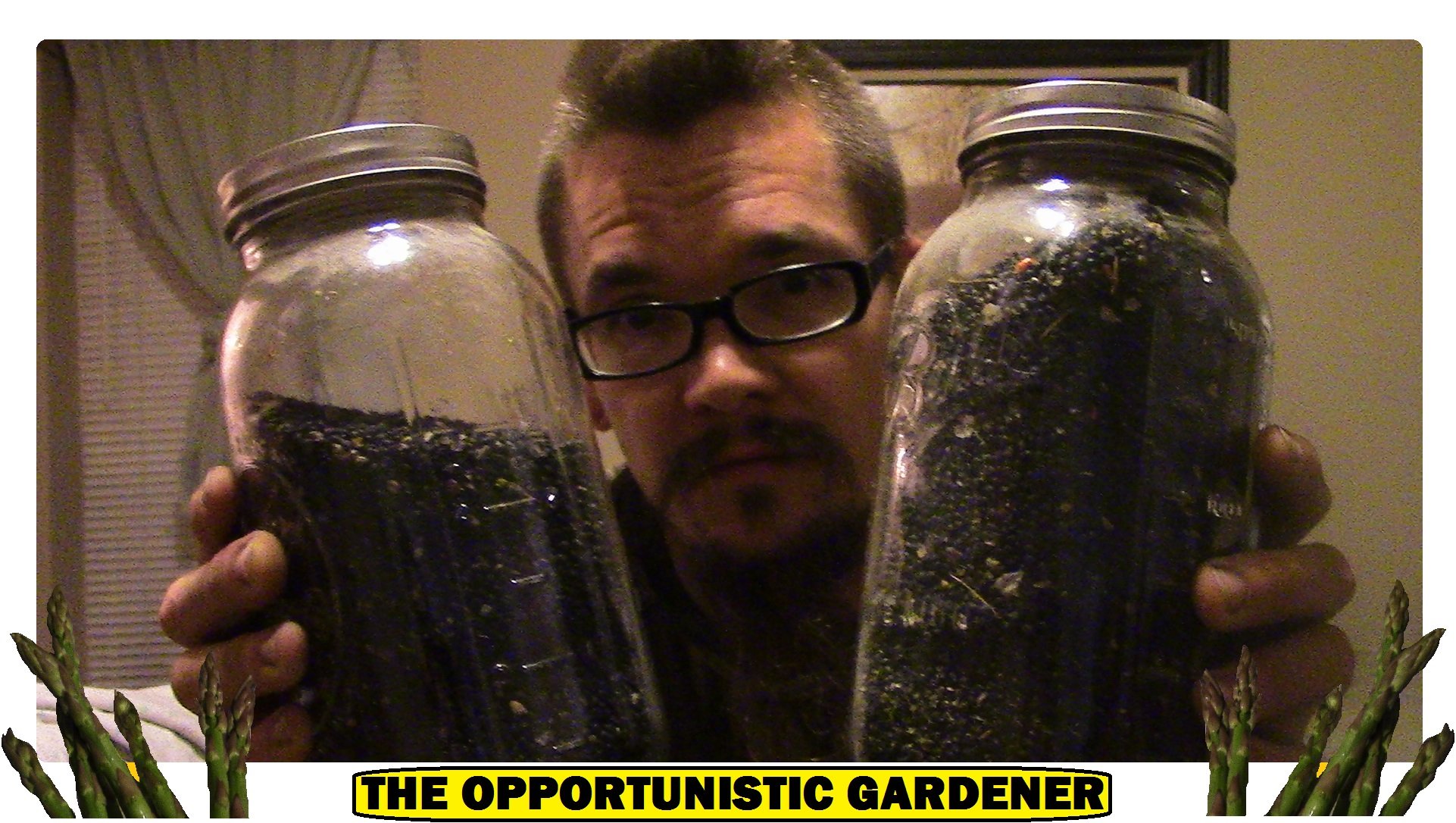
These are the ones that I harvested last year!

Here are some short videos of @papa-pepper in the ditches locating the plants and collecting the seeds:


OTHER FREE SEED IDEAS
Since @papa-pepper is always on the lookout for good investments of my time that pay off long-term benefits (especially ones that we can do as a family) I've found out some great ways to get some other free seeds to. Here are a few examples.
Stinging Nettles
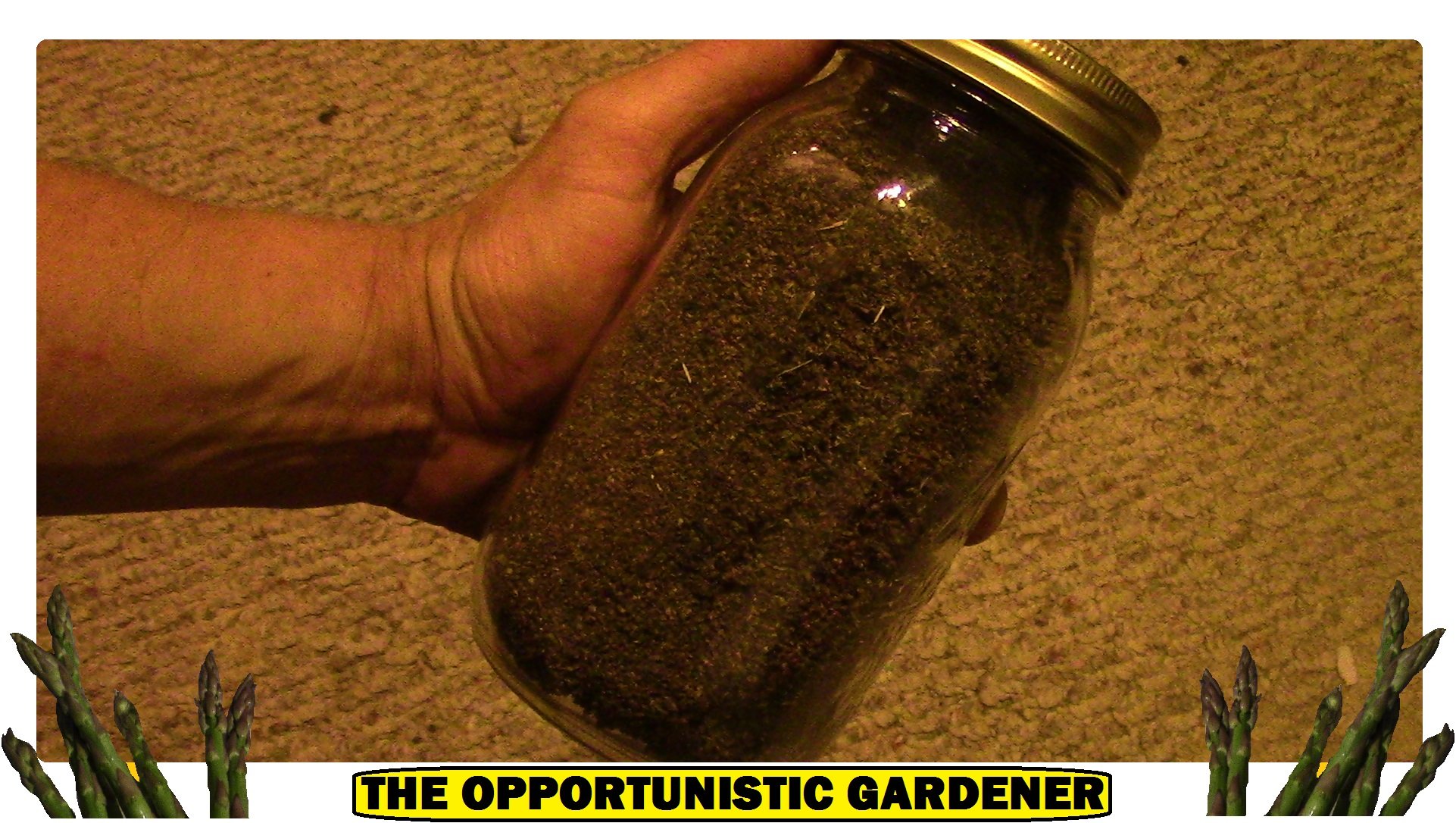
Since Stinging Nettle is probably my all-time favorite wild plant, I always enjoy being able to find some. There is no way that I want to have my own property and not have some growing somewhere. Rhizomes are the easiest way to get some established quickly, but seeds are easier to store and can last longer without being planted. When I do my fall harvests of wild nettles, I make sure to save the seed heads. Above is just one jar of stored seeds that I have awaiting the proper placement on papa's property.
Millet
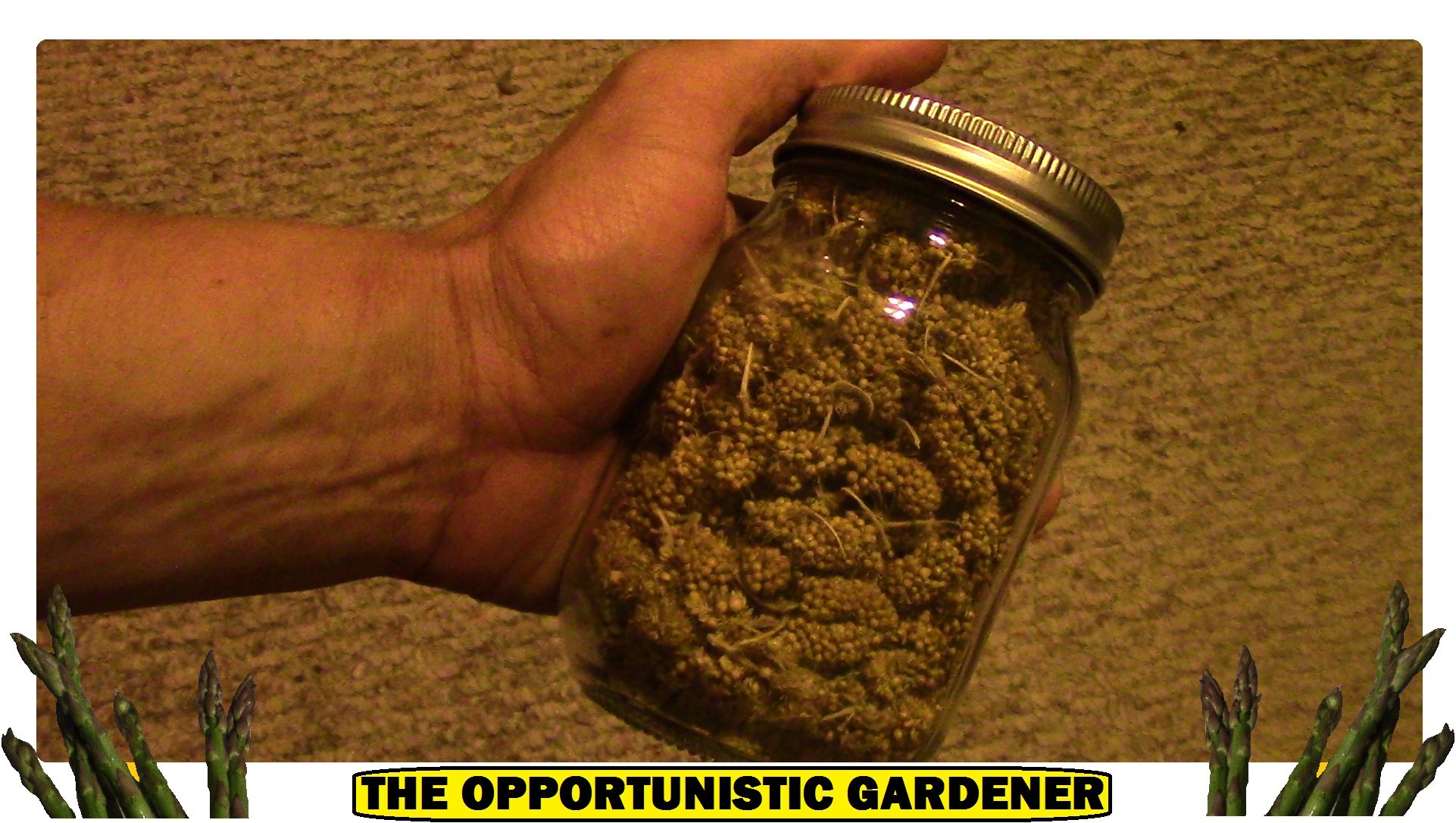
Millet is a great, versatile grain that is all too often overlooked in America. This jar is full of seed heads that were collected off of a back-road in rural Wisconsin. Most likely, a farm truck or dump truck full of the harvested heads had driven past earlier, and some of the heads had blown off the top, littering the road. Since Millet is a great food for Hermit Crabs, Birds, and people, it can be a useful and profitable crop to grow. We grew some this year for our own consumption, and still have more to plant in the future.
Magnolia Tree
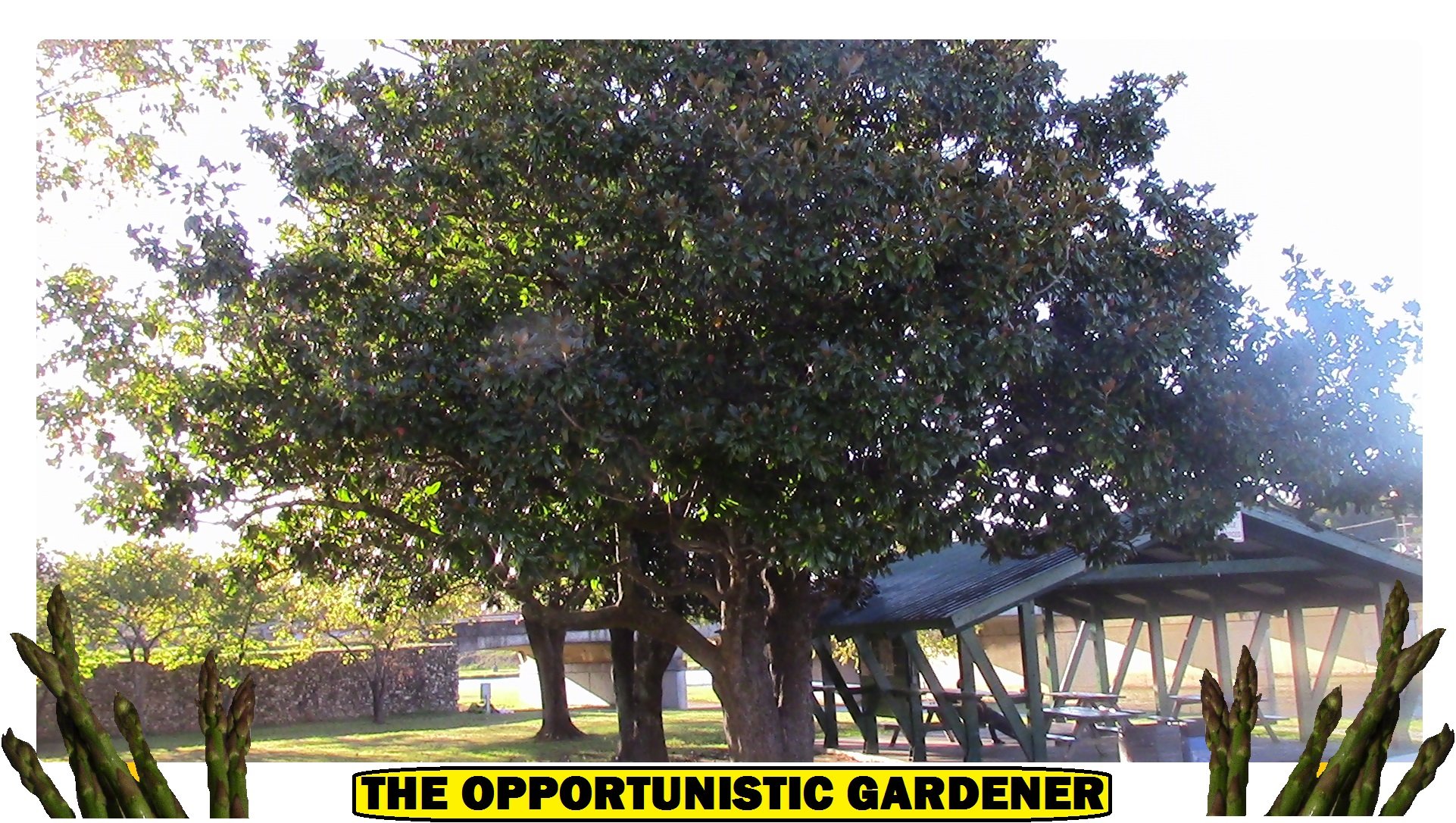
We were at a park catching some fish and enjoying our time together this afternoon as a family. At the park are some large Magnolia trees, which are a majestic variety that have large white flowers earlier in the year. Those flowers eventually turn into these.
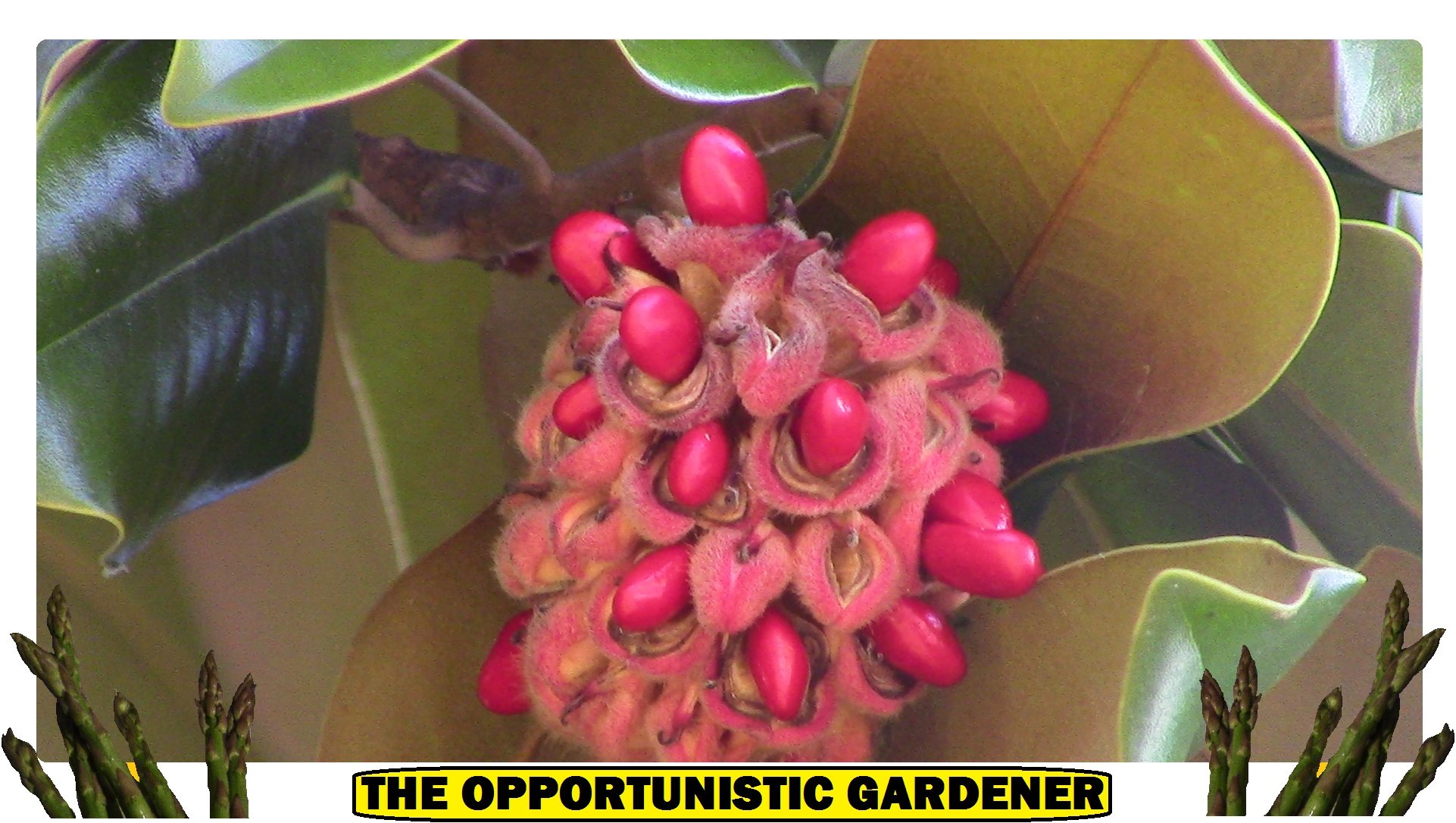
The interesting seed cones become full of these bright red seeds before they drop to the ground.

I noticed the bright seeds on the ground when I was disposing of some trash, and immediately seized the opportunity. I have seen small Magnolia trees at local nurseries selling for almost $90.00 USD each. With that kind of potential, I'll make the effort to gather some with my children and plant them later on. Worst case scenario, we will have had some fun collecting and planting them with no results. Best case scenario, we may have just got a few hundred more dollars for our family in the future.
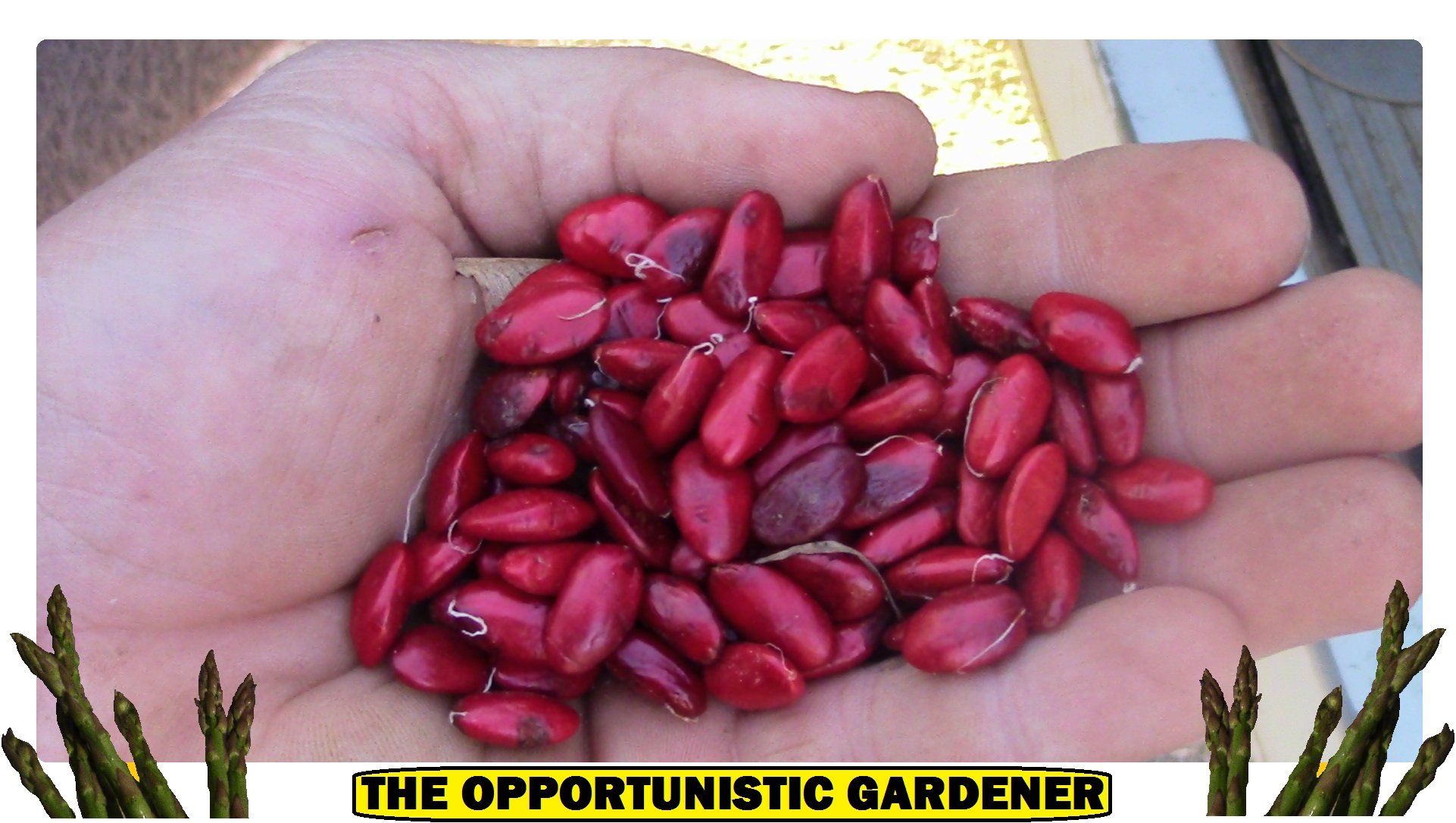
This handful was collected in just a few minutes and contains over 100 individual seeds. I'll keep you posted on what happens with them!
Also, if anyone in the US wants some free Asparagus seeds, Papa will send some to you free of charge!

Yeah, no potentially incriminating rhetoric this time folks, but stay tuned!
As always, I'm @papa-pepper and here's the proof:
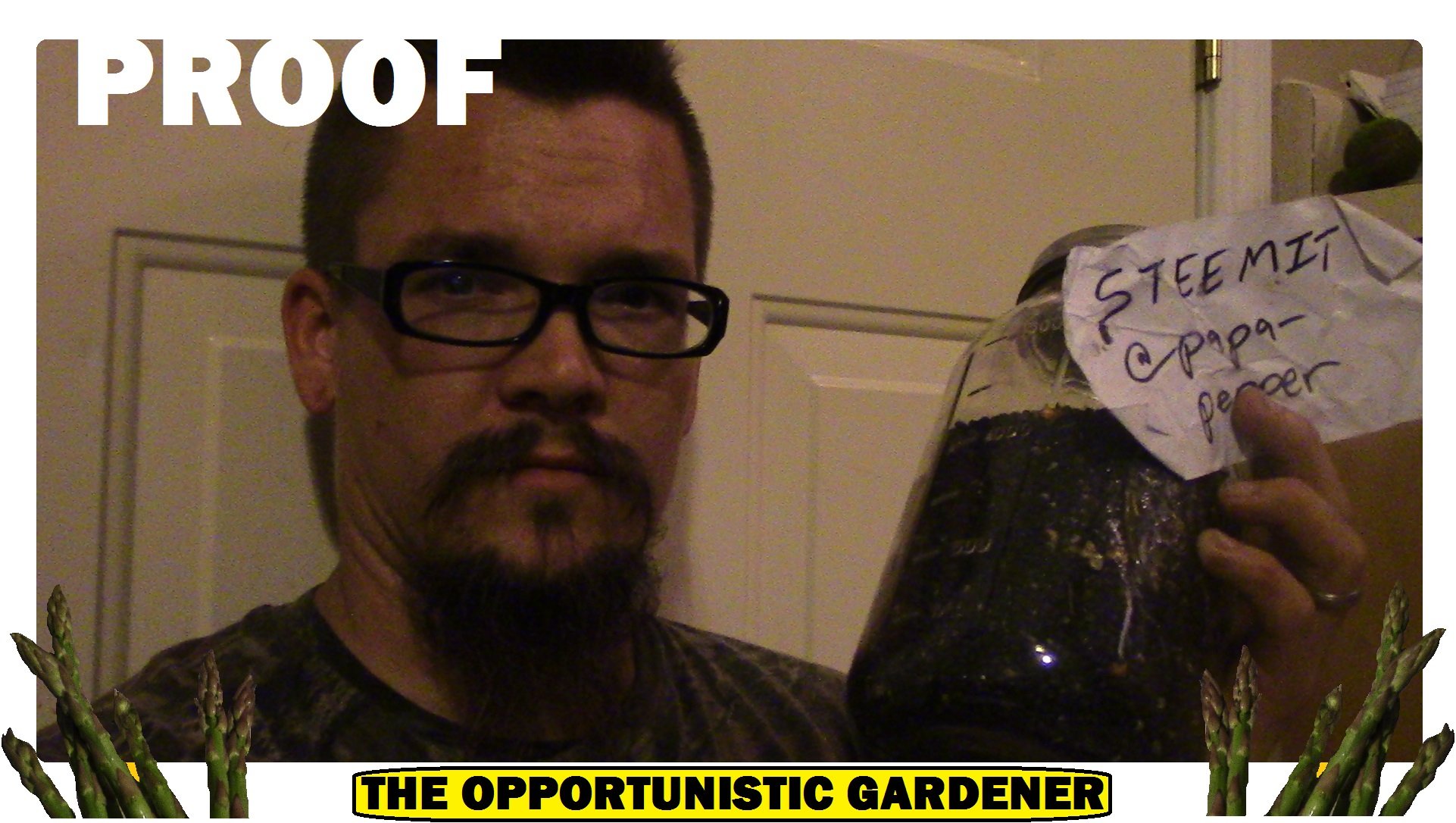
proof-of-opportunity-taken

FOLLOW

Awesome Handcrafted @papa-pepper logo kindly donated by @vlad - Thank you!!

OPERATION TRANSLATION logo provided by @oecp85.
(click link above for more info on Operation Translation.)

